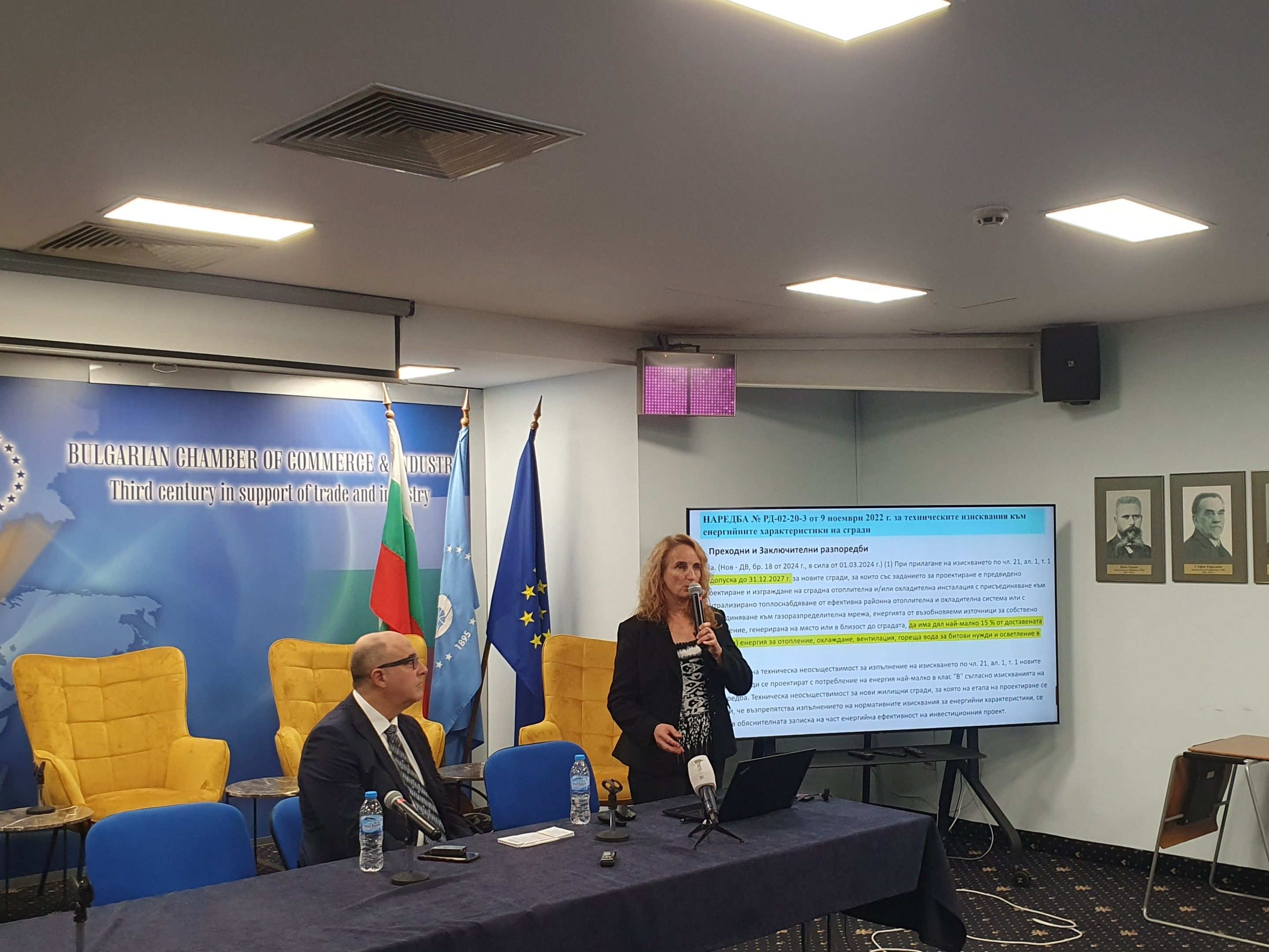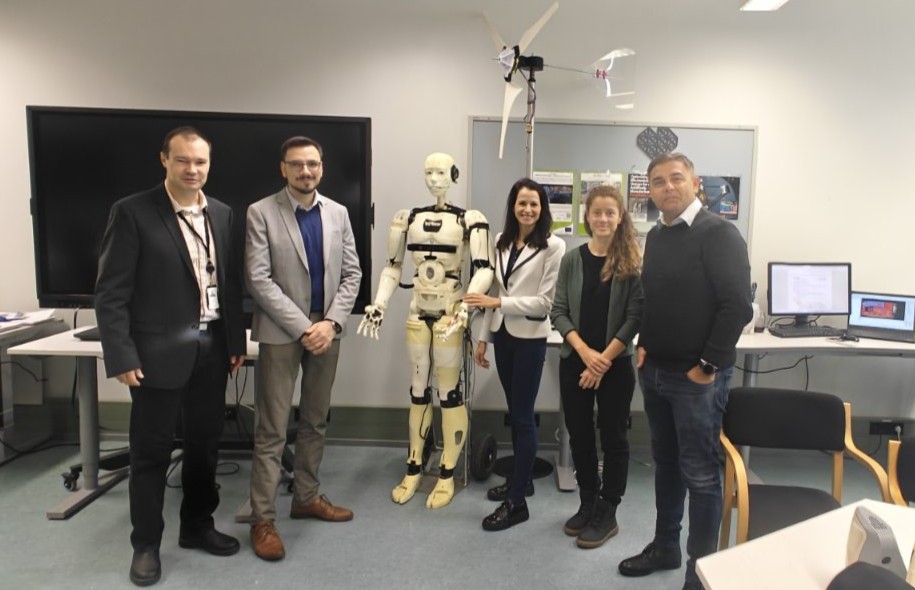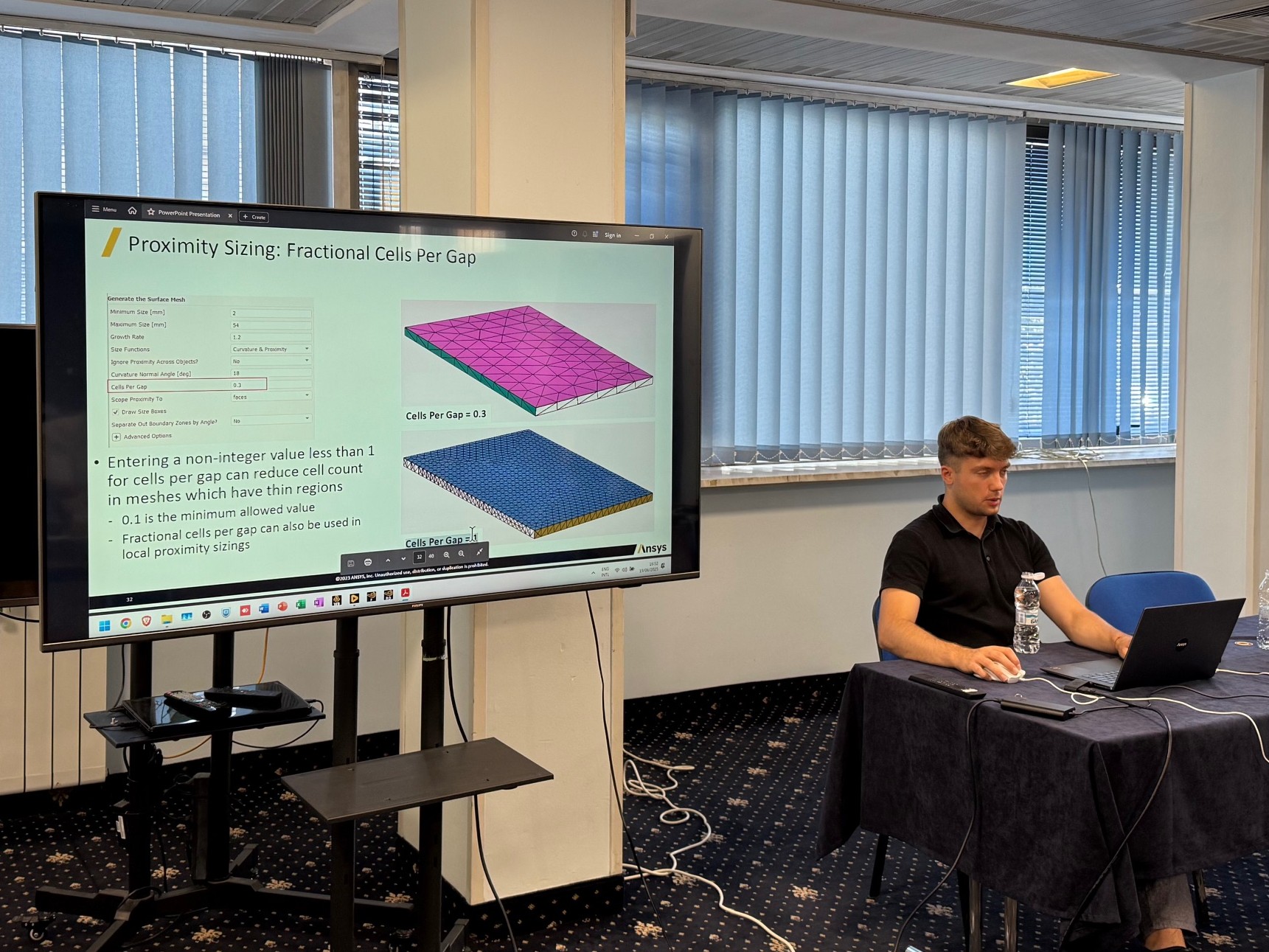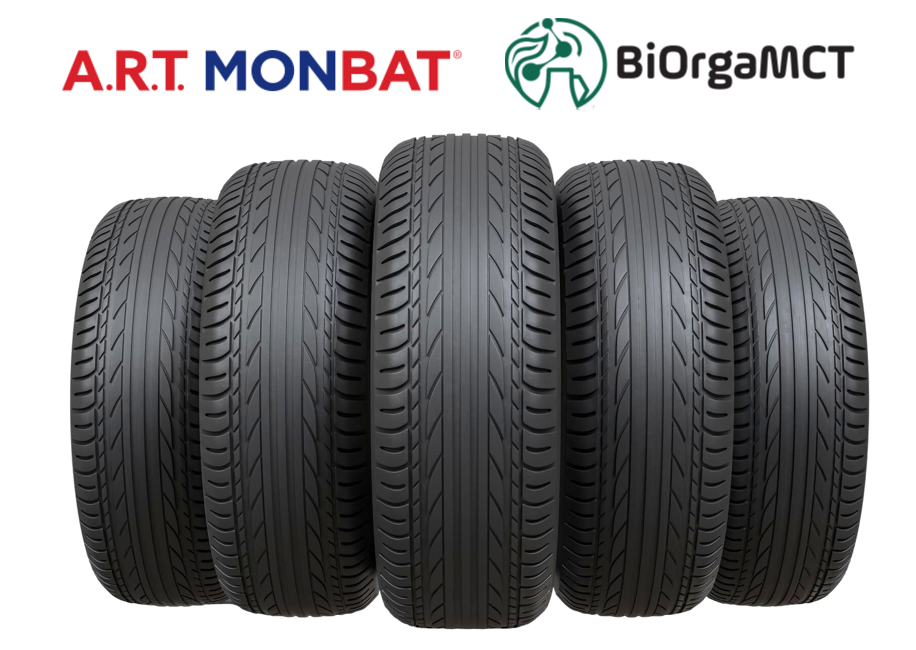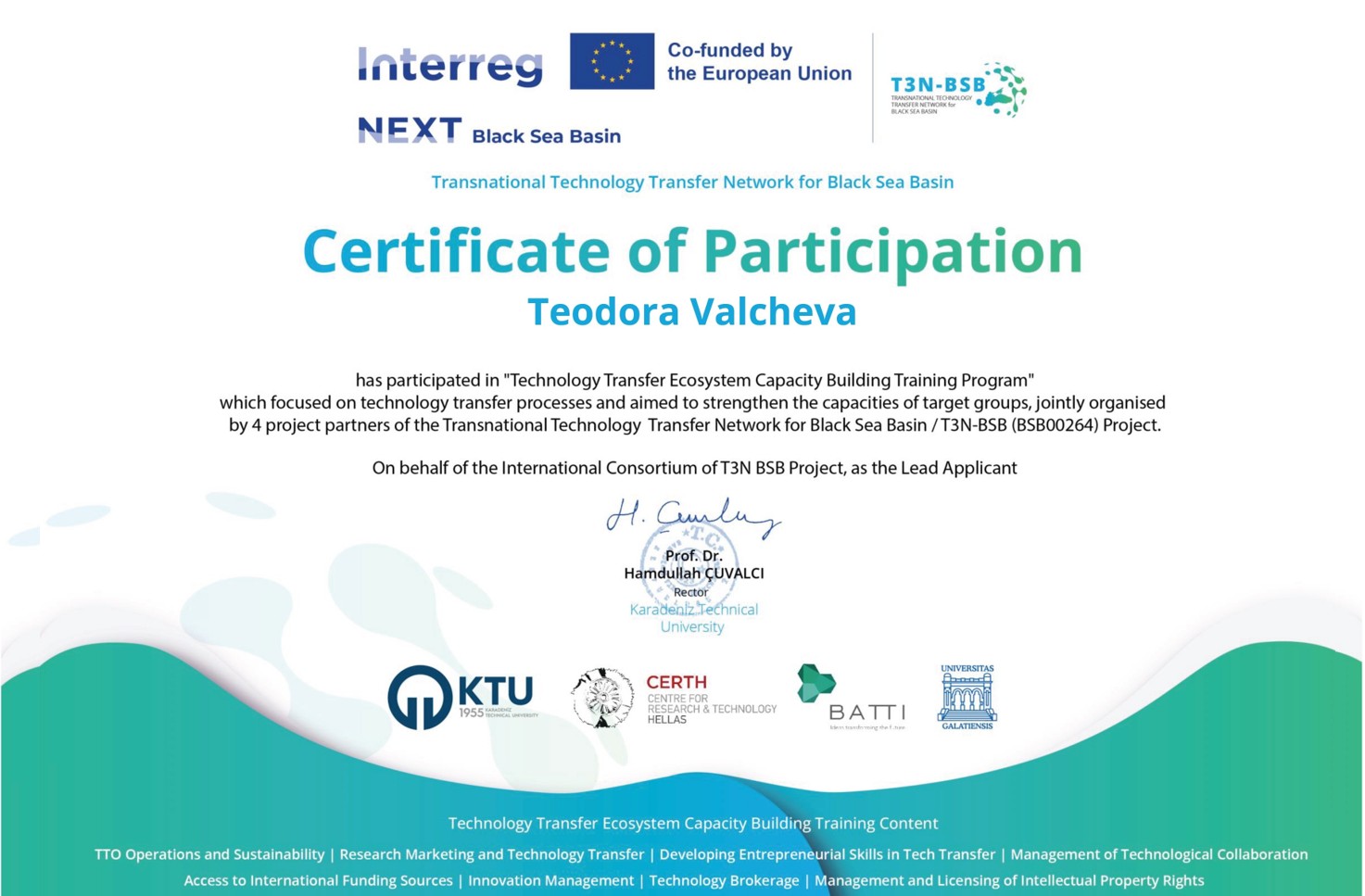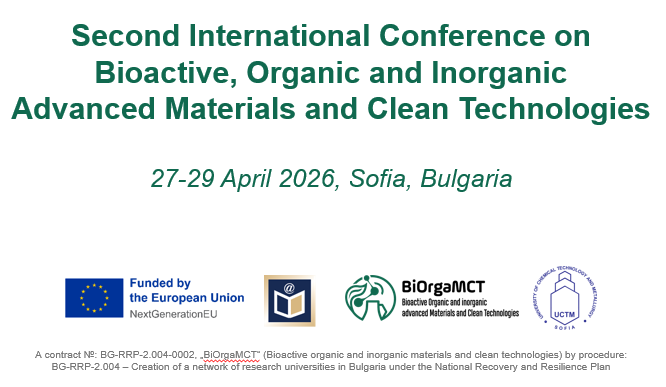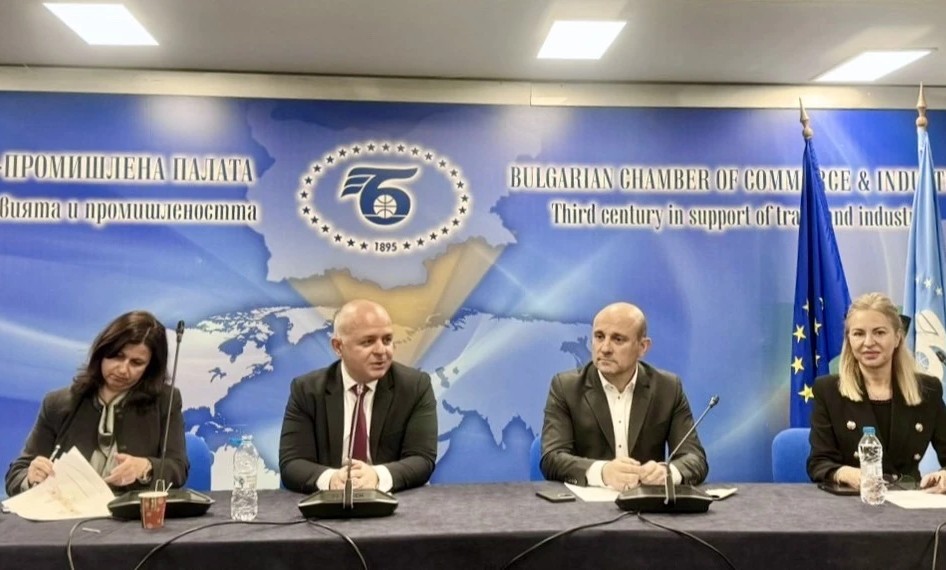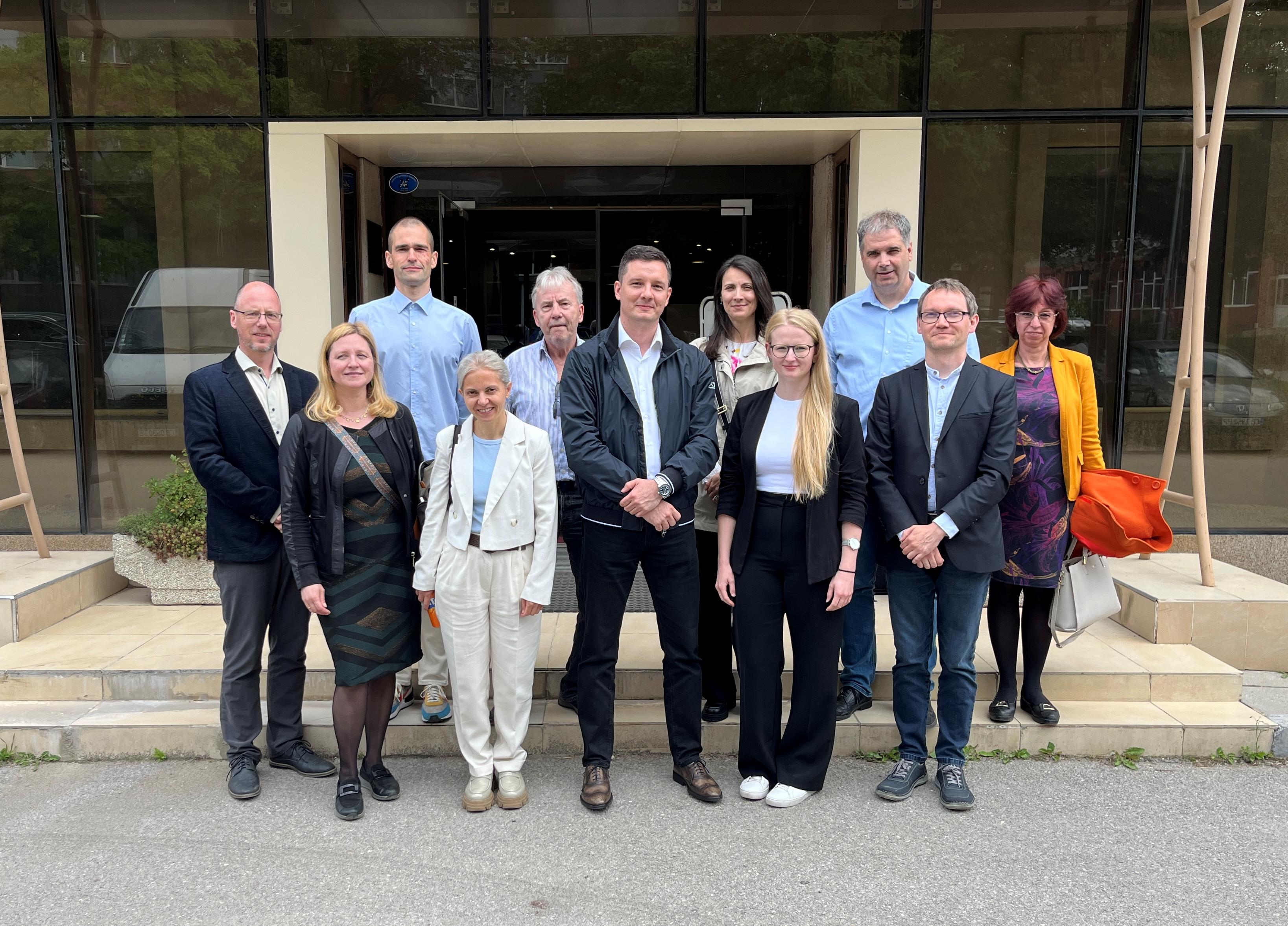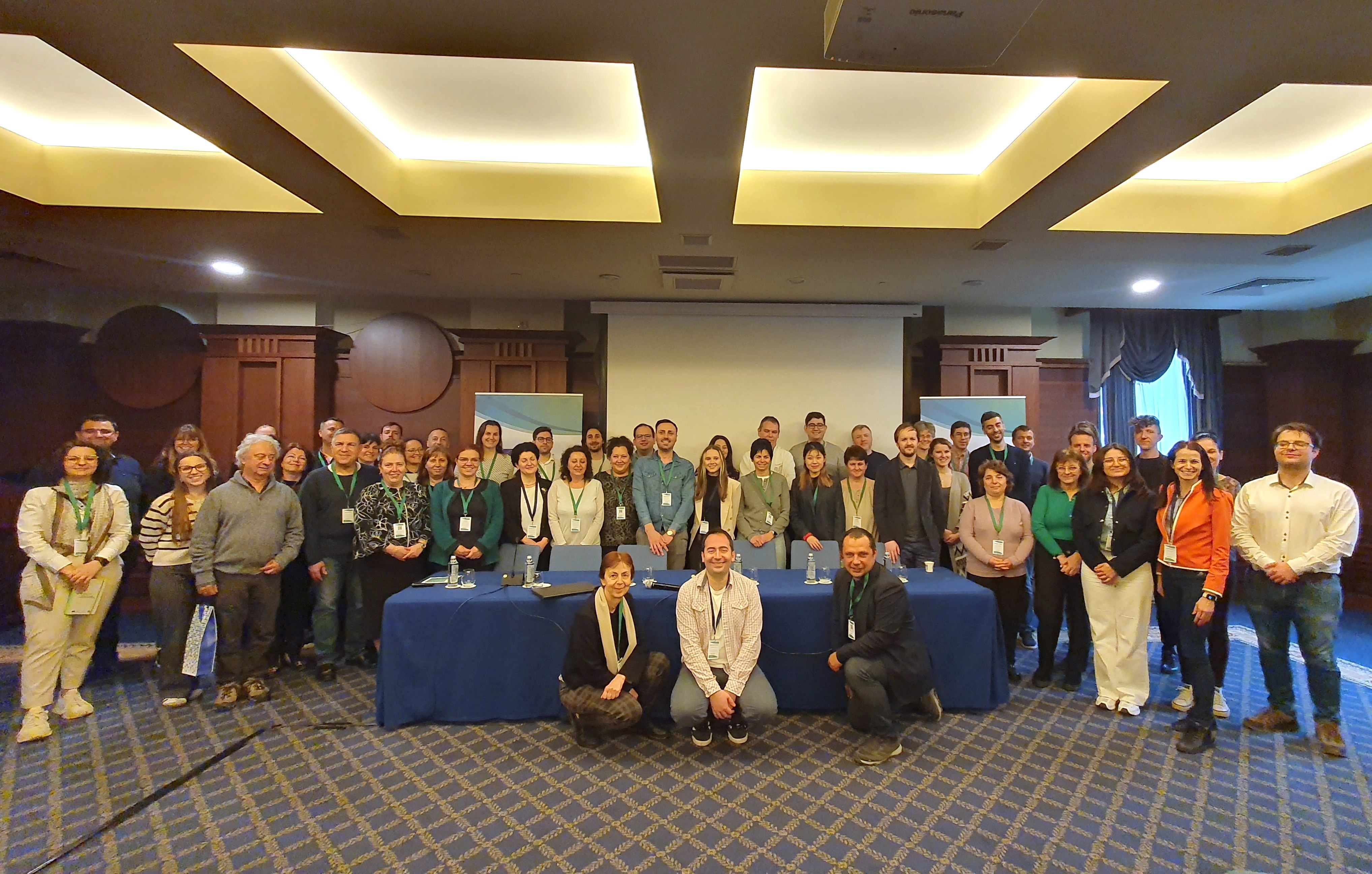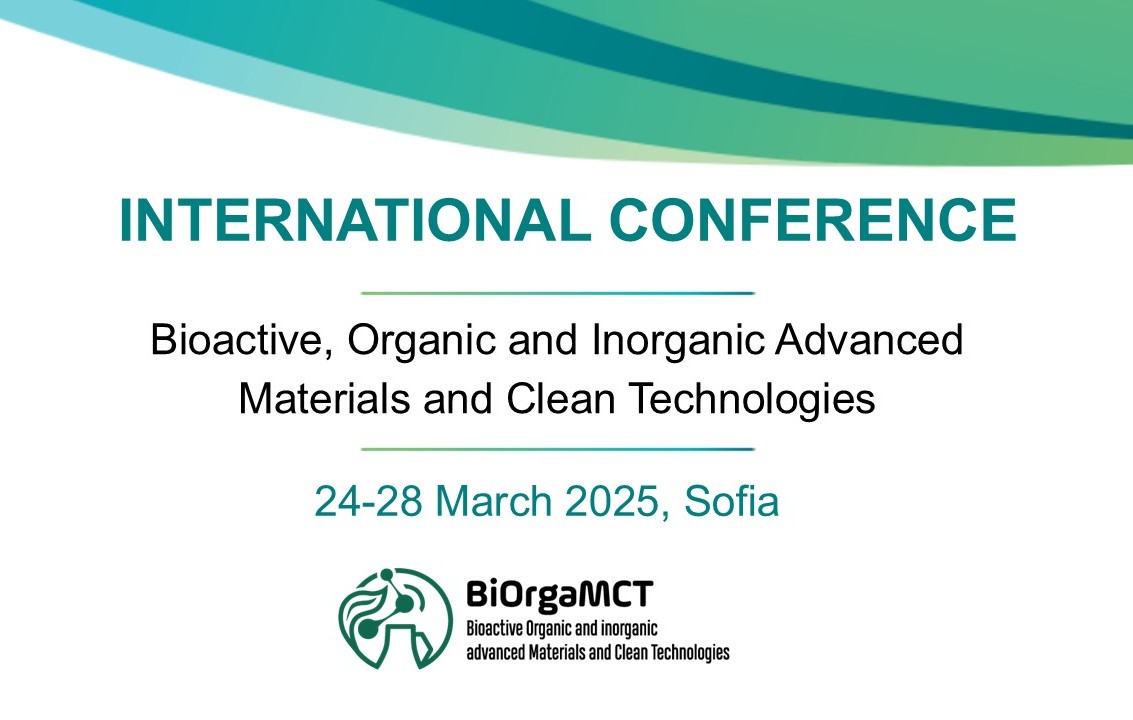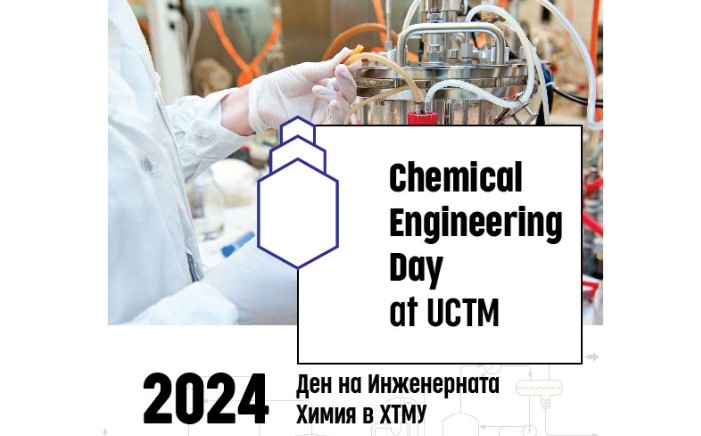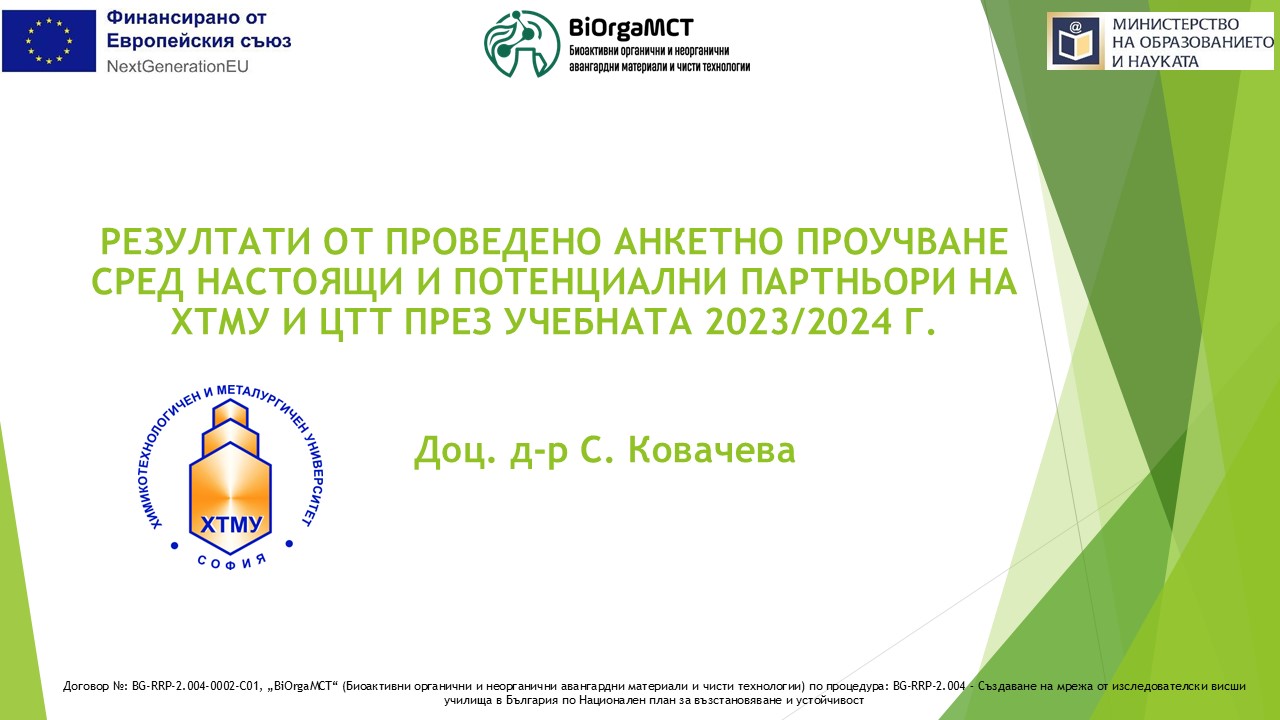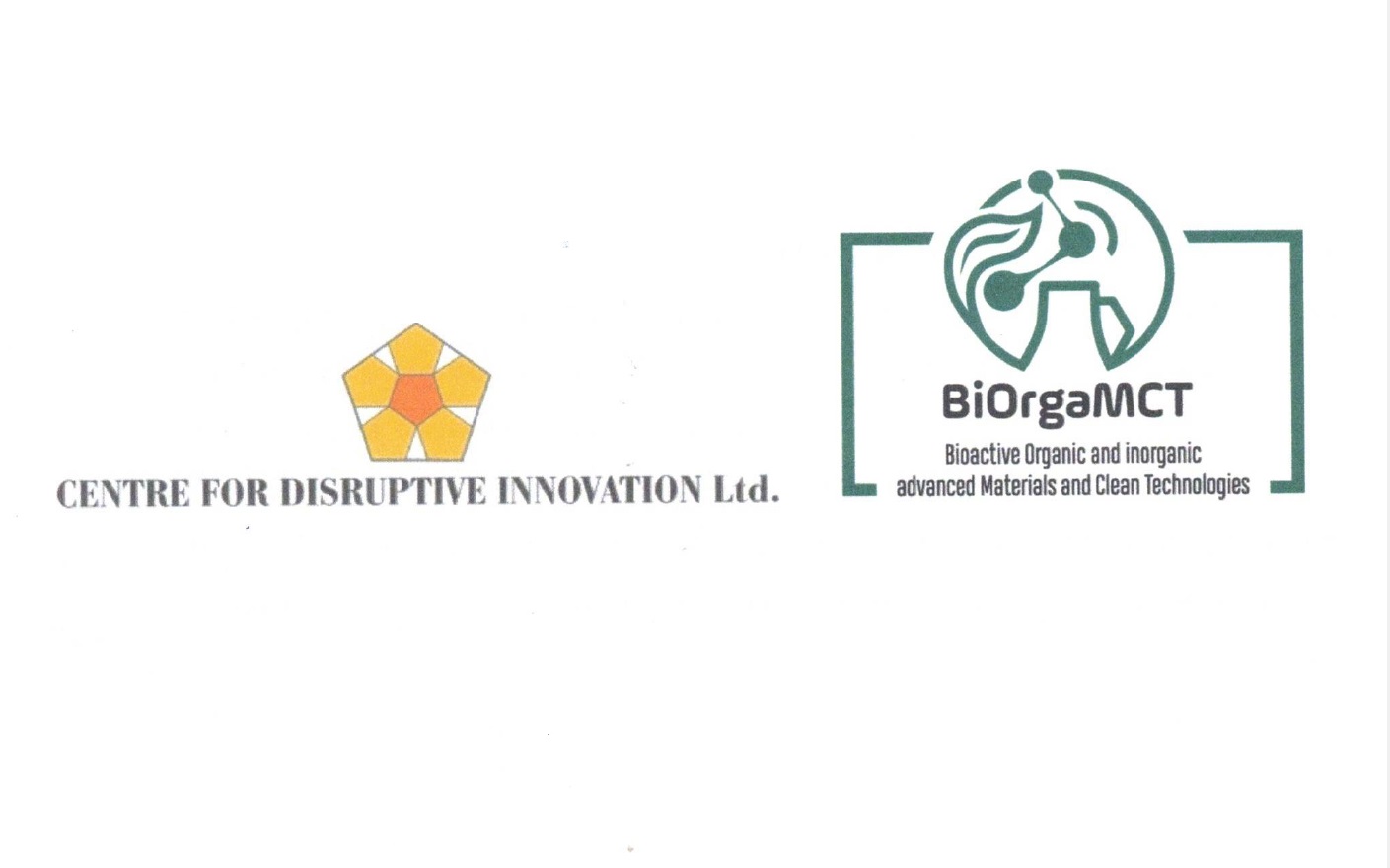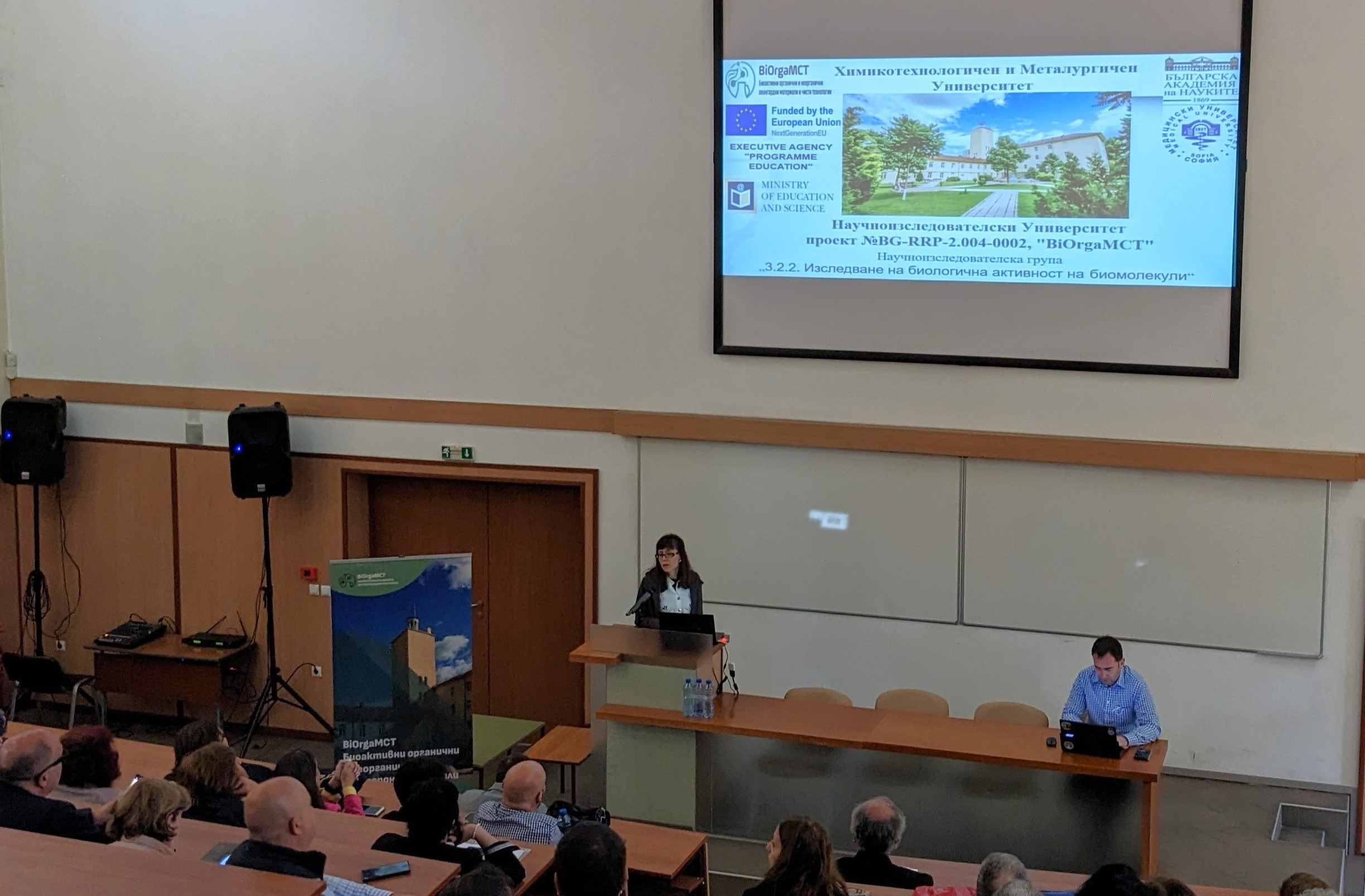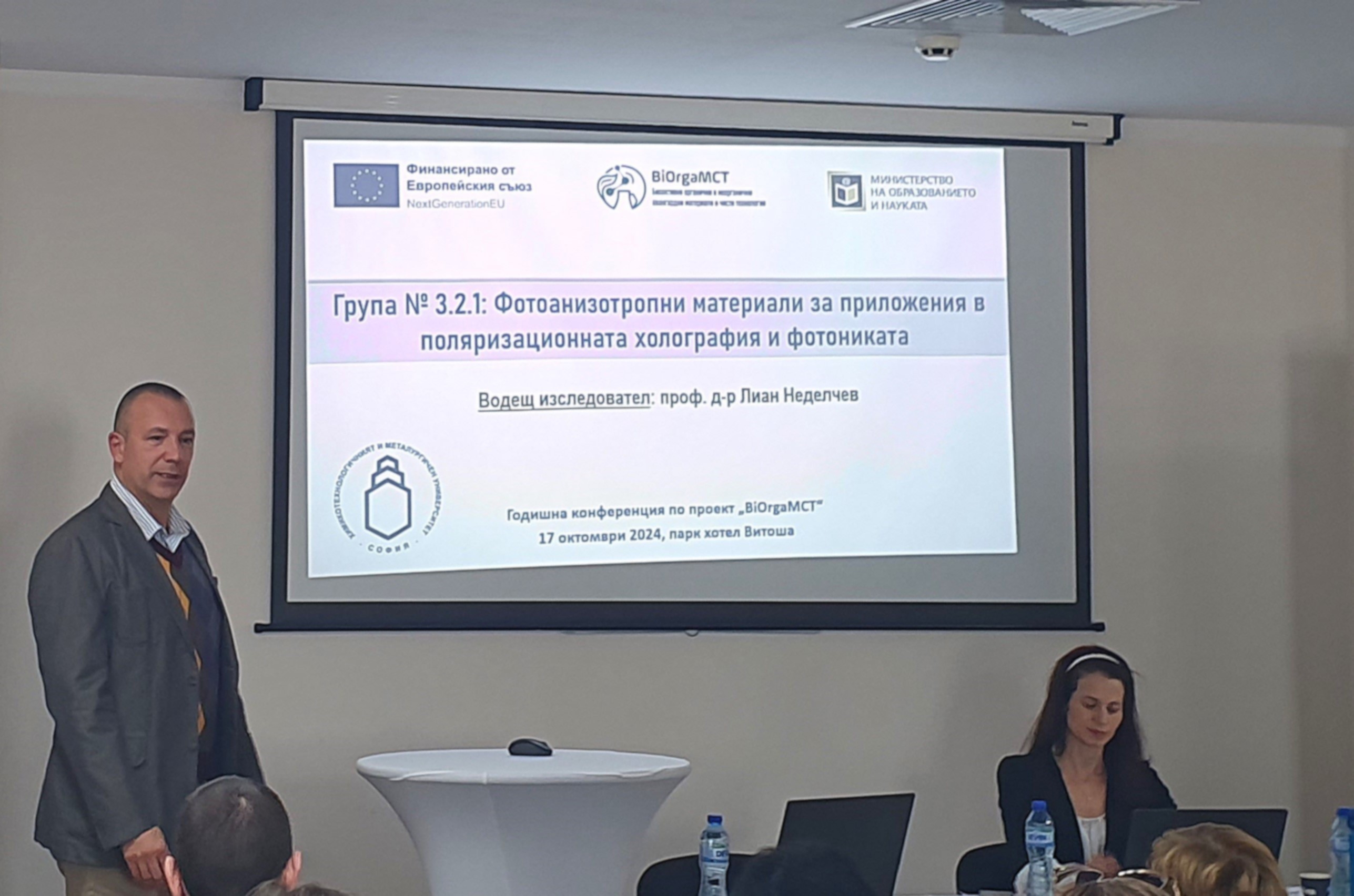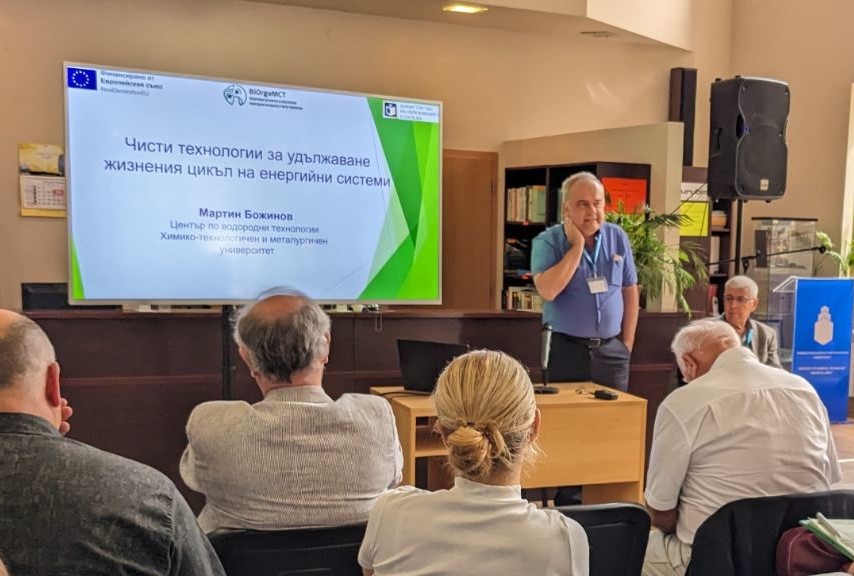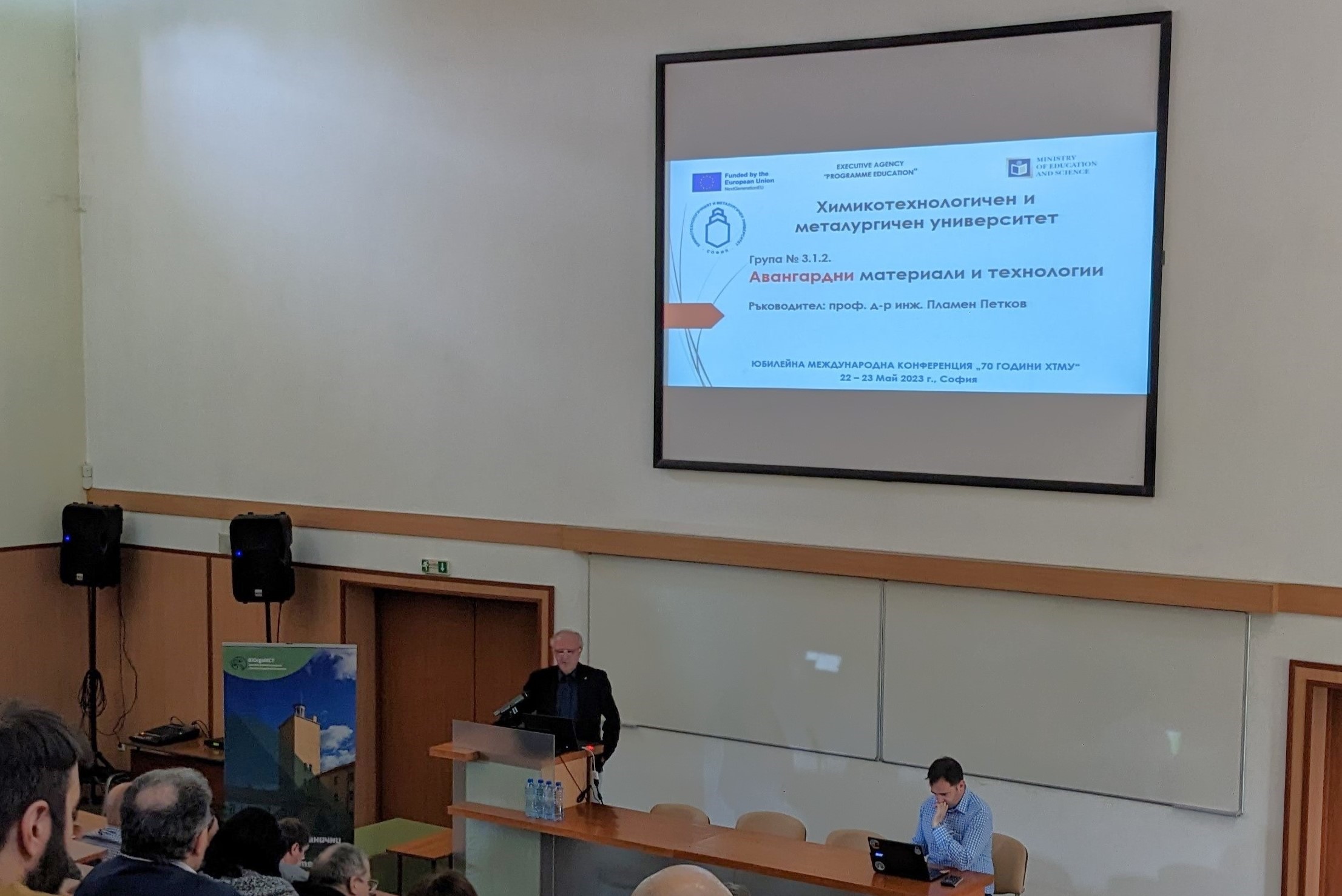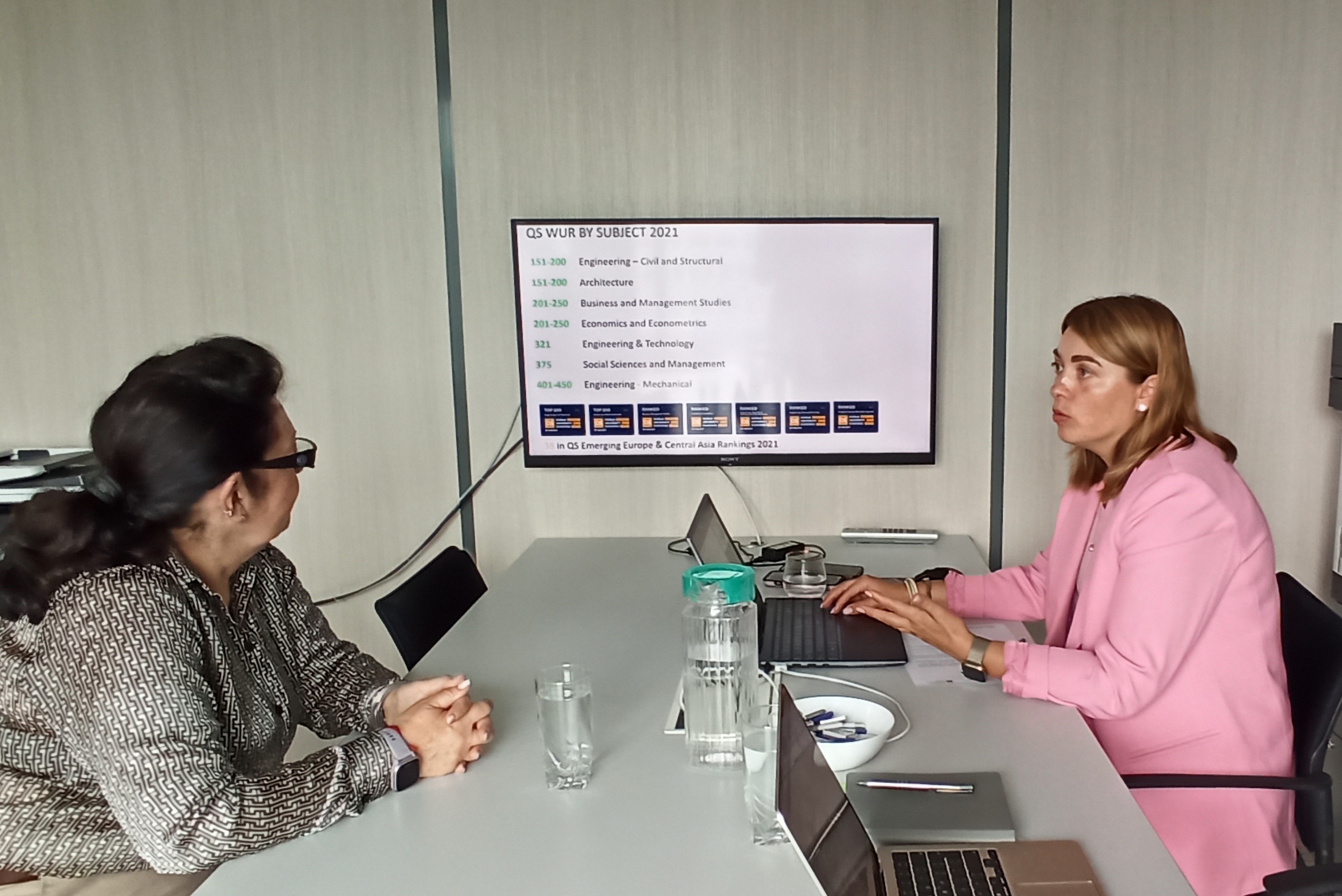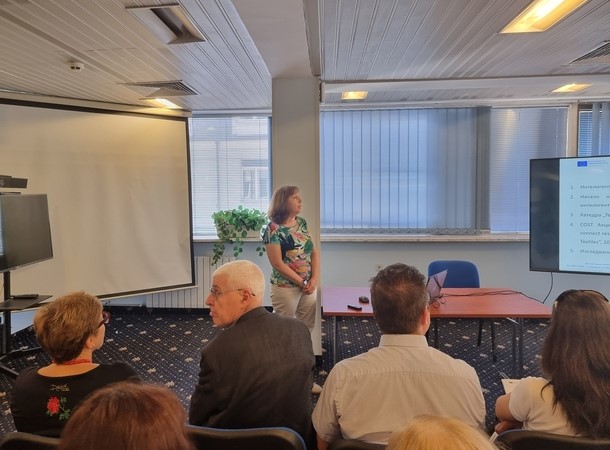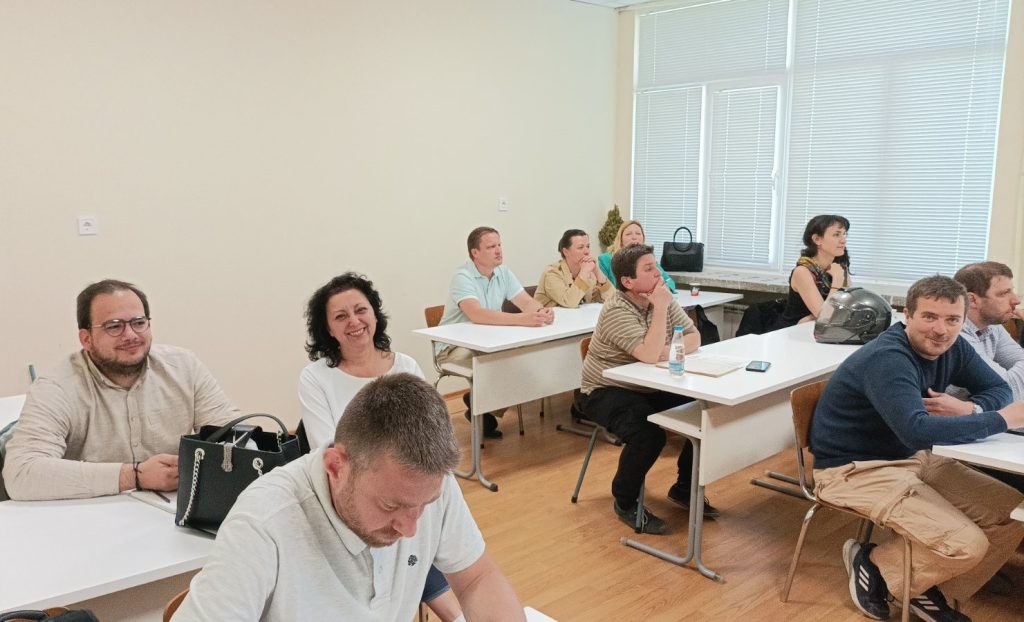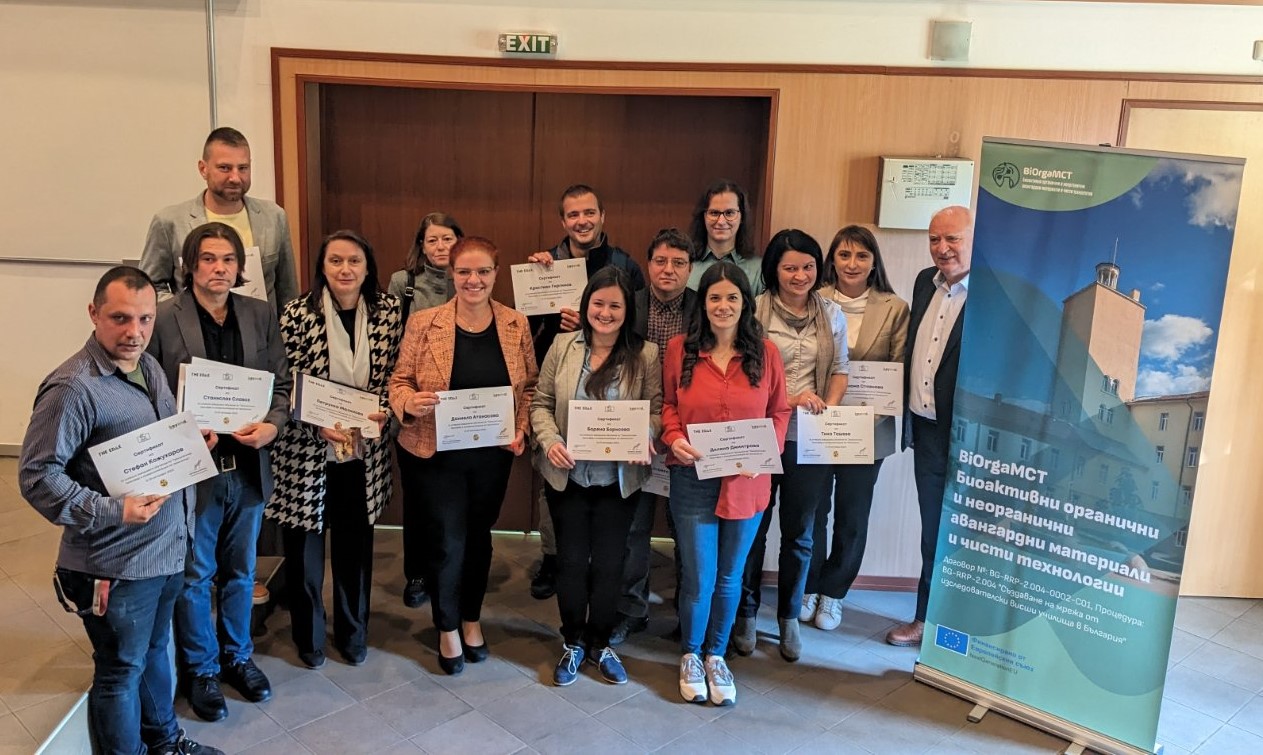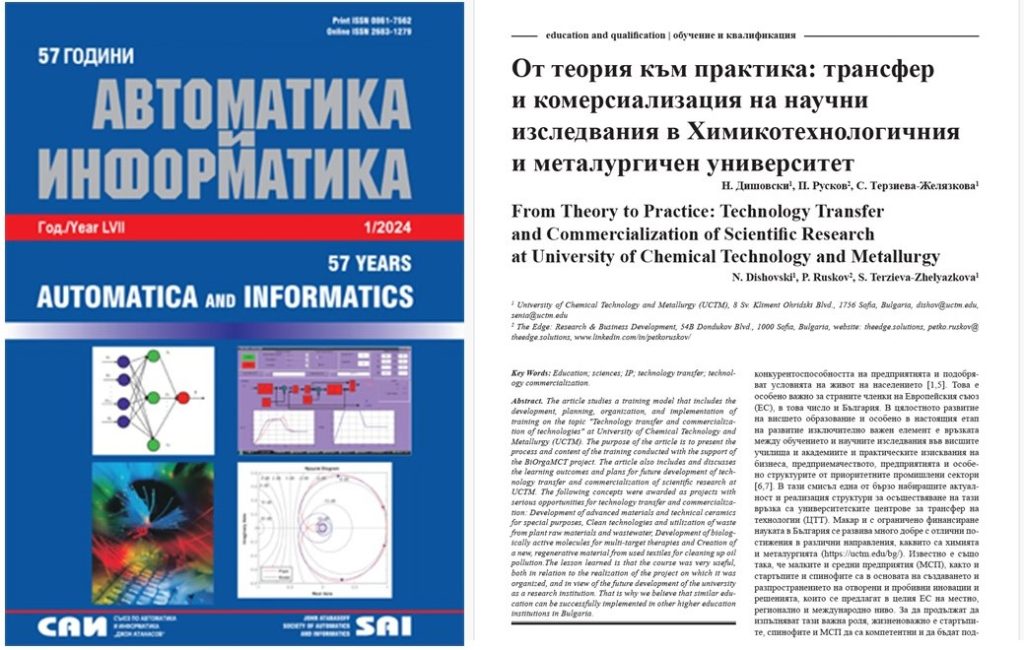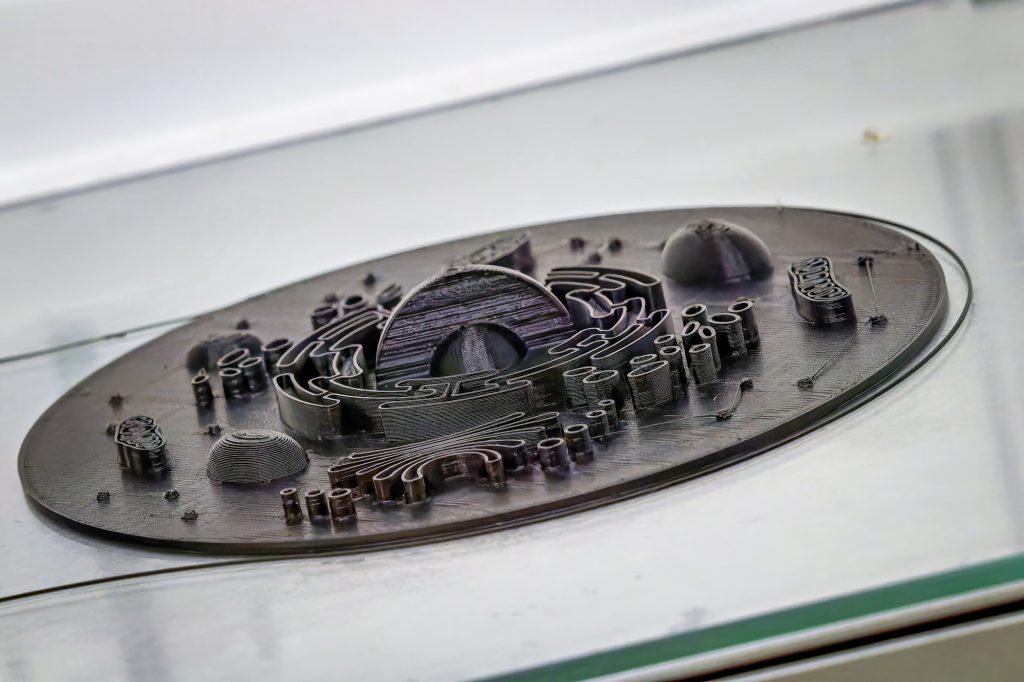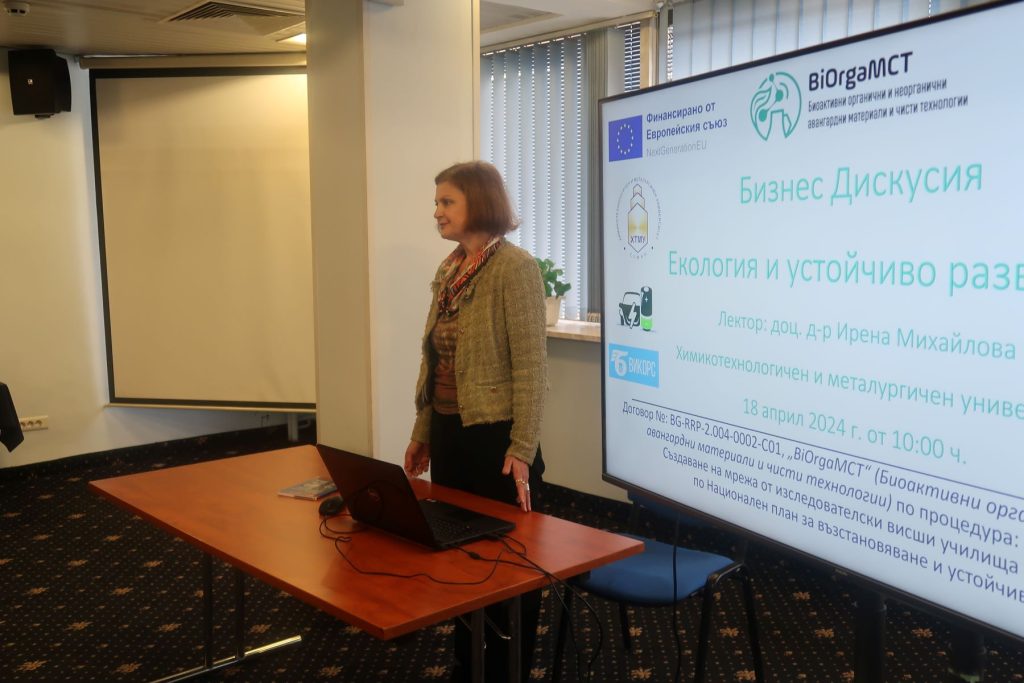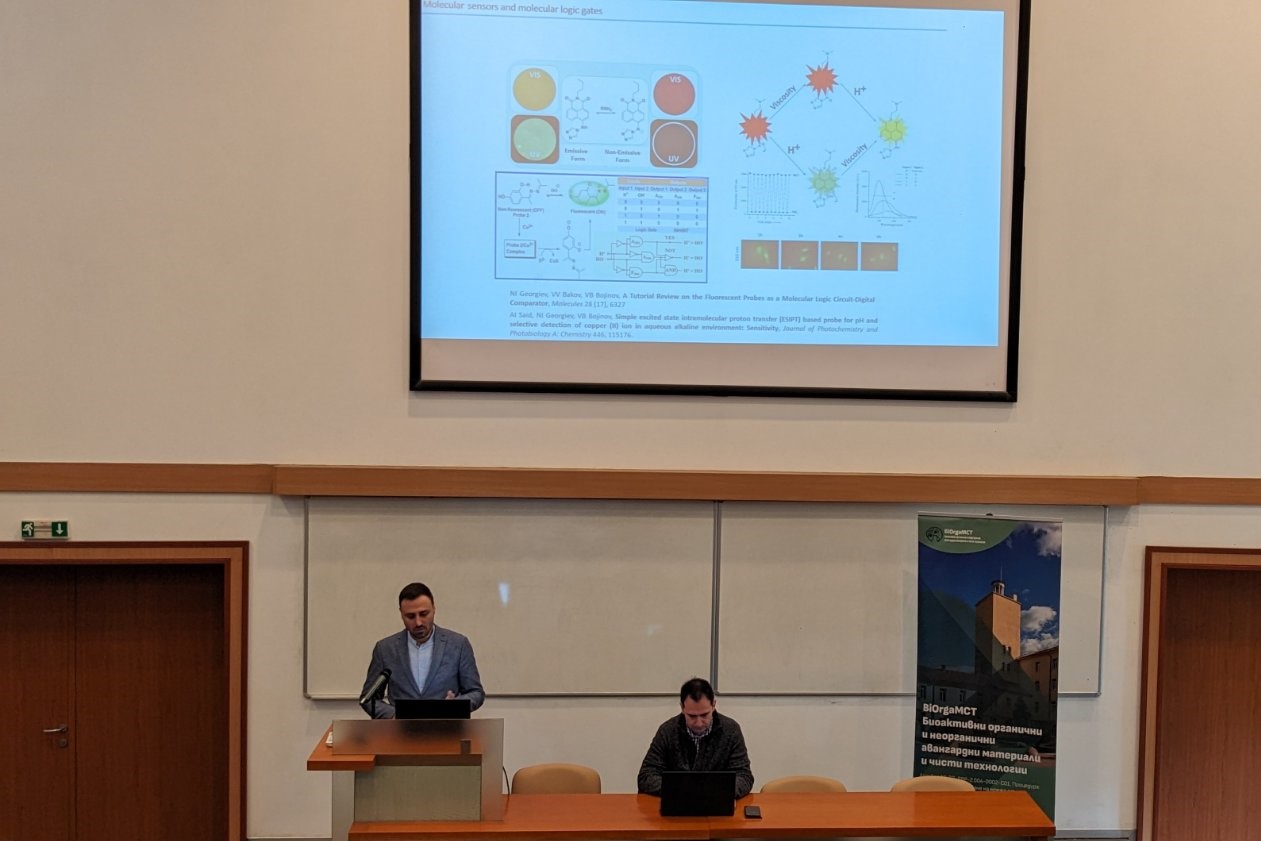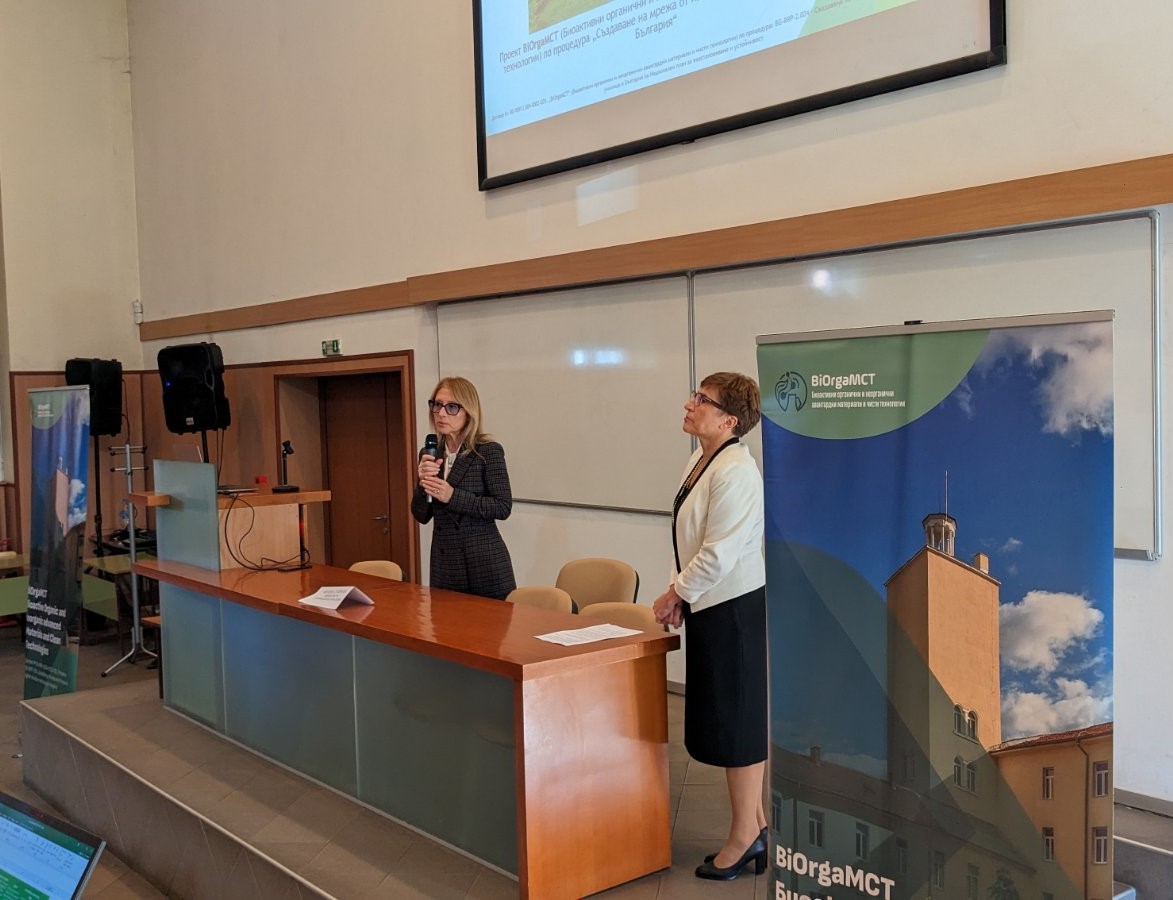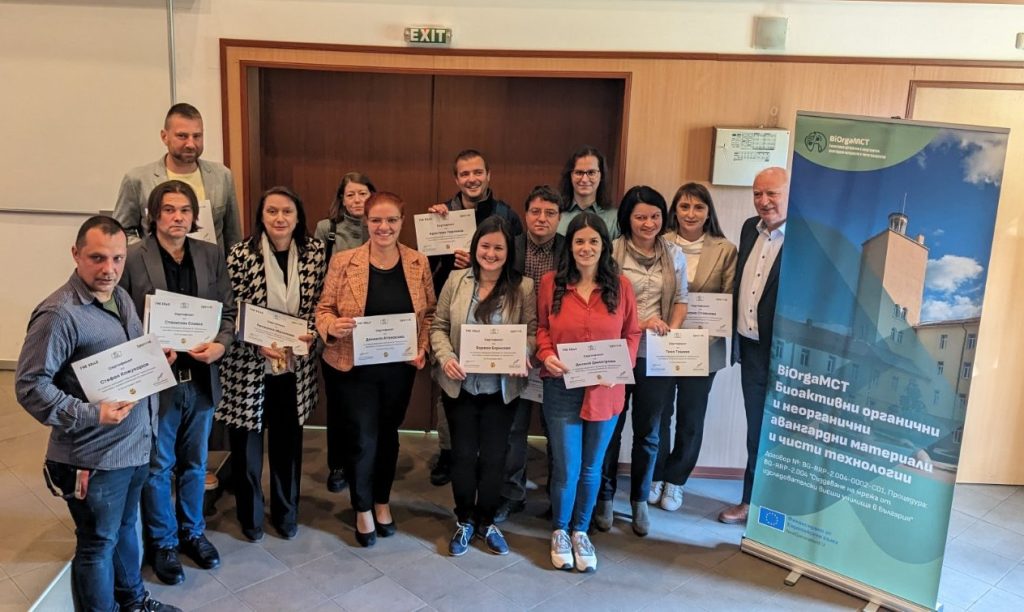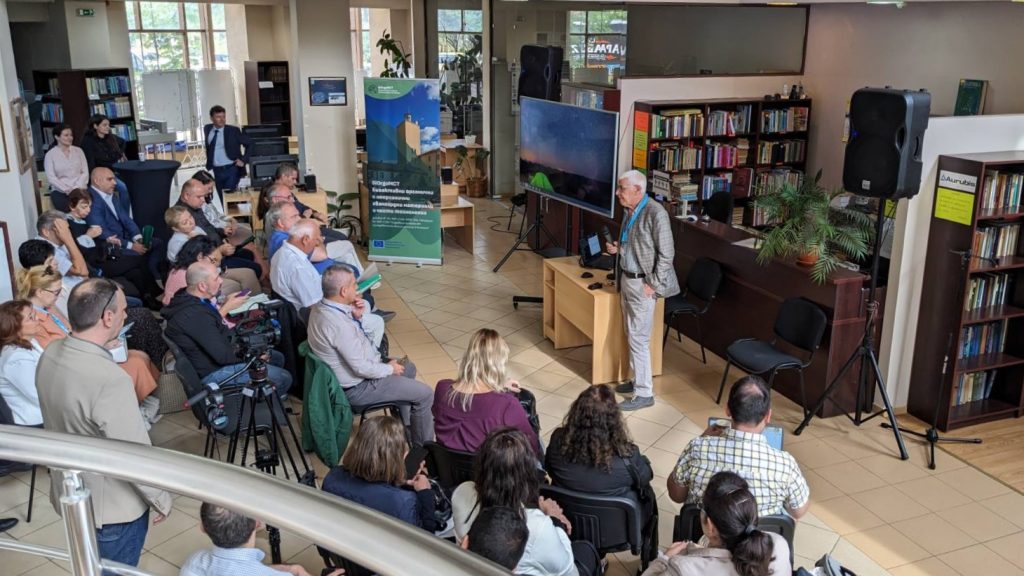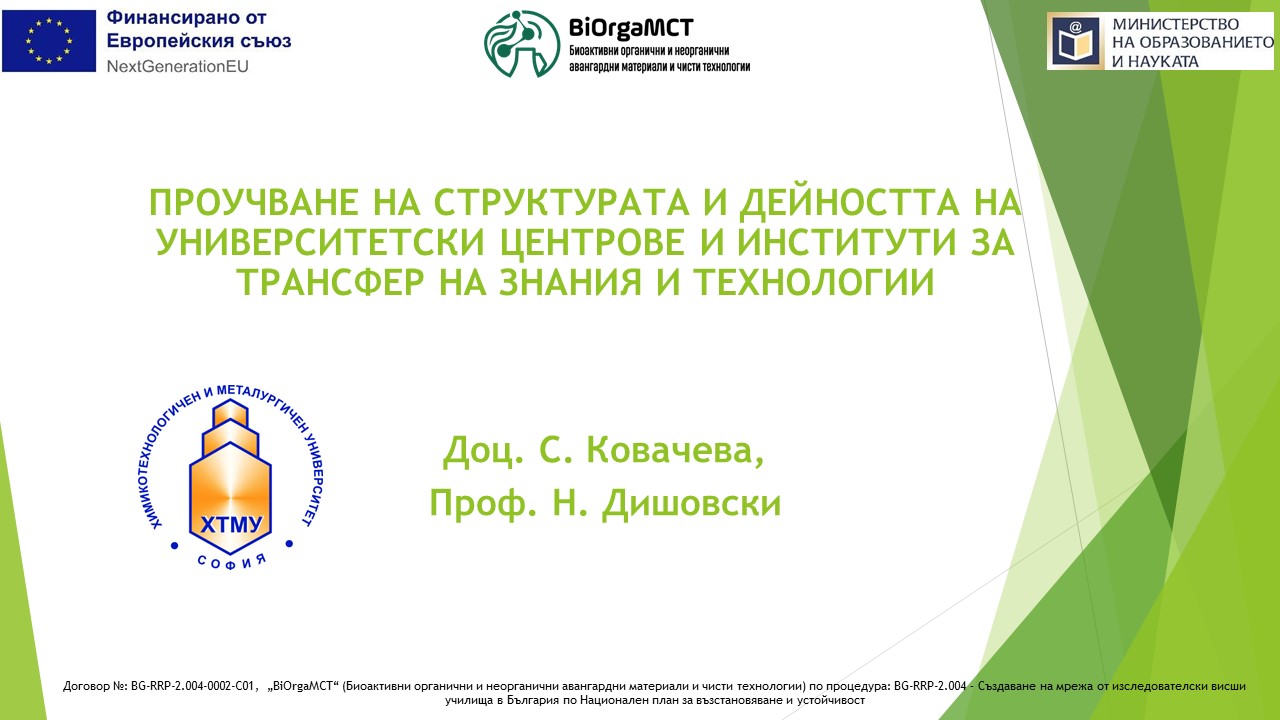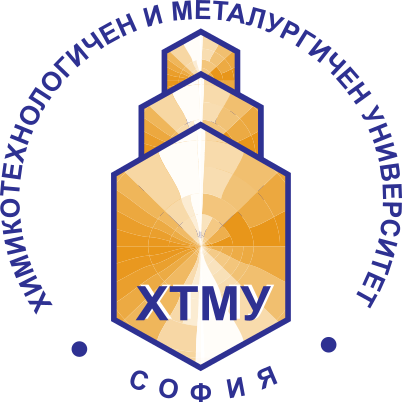About the group
Leading researcher: Prof. Lian Nedelchev, PhD
Theme: Photoanisotropic materials; Polarization-selective holographic optical elements; Polarization and surface relief gratings with applications in photonics.
Azobenzene (AB)-containing materials are a class of optical materials intensively studied in recent decades due to their potential use as optical information recording media, optical switches and sensors, as well as in polarization holography and photonics. Due to their unique photochromic behavior, ABs can be used to induce controlled changes in the physicochemical, mechanical, electronic and optical properties of materials. In practice, the photoisomerization process is used to switch a material between two different states or phases.
Photoisomerization of azobenzenes can be used to convert electromagnetic radiation energy into mechanical energy by inducing reversible structure and volume changes in the material. At the molecular level, only active chromophores with a dipole moment parallel to the axis of polarization of the light are induced by linearly polarized light. This selectivity is due to the highly anisotropic structure of the trans- azobenzenes and ultimately leads to anisotropic clustering of the chromophores and birefringence in the material. Most azobenzenes are known to isomerize and exhibit a photoorientation effect. Due to photoorientation with linearly polarized light, azobenzene molecules preferentially absorb light polarized along the long axis of the molecule. In practice, this means that the absorption of molecules perpendicular to the polarization axis of the incident light is negligible compared to that of molecules located along the axis. Repeated, highly efficient transitions in azochromophores between trans and cis isomers lead to a reorientation perpendicular to the direction of polarization of the incident light. The resulting anisotropy, inducing a large and constant in-plane birefringence, can be observed in the polarized absorption spectra of the film. The course of the orientational anisotropy is followed by measuring the transmission of a low-power sample beam through the polarizer/sample/analyzer configuration. The birefringence Δn can be calculated by the formula below, where d is the film thickness, λ is the wavelength of the probe beam, I is the signal of the probe beam passed through the birefringent specimen (the polarizer and the analyzer are placed perpendicular to each other, and I0 is the signal through a non-irradiated sample (parallel polarizer and analyzer).
Holographic recording in this kind of materials is inextricably linked to the phenomenon of photoinduced mass transport and the formation of surface relief gratings (SRGs). The ability to create large-amplitude SRGs in azo materials has become essential because of the extremely high diffraction efficiency that is easily achieved using a one-step recording process and the ability to erase and reconfigure gratings at will.
Therefore, not only research on the realization of holographic recording, but also the formation of SRGs itself is attracting great attention as a new, important tool in the field of photonics and micro/nanotechnology. Another significant application of azo materials is as photoactive polymer matrices in nanomedicine in the form of supports for bioactive molecules in dosage forms. In the last few years, nanostructured azofilms have found application as (bio)sensors in a number of fields of medicine and science studying living organisms. Among the abundance of nanostructures currently available, SRGs offer key opportunities for applications in biosensing, such as portable in situ detectors, due to their inherent property to absorb in the fingerprint region, as well as their compatibility with collinear optical shapes and the possibility of easy integration into other micro-technology platforms such as microfluidics.
Publications:
- Mateev, L. Nedelchev, L. Nikolova, B. Ivanov, V. Strijkova, E. Stoykova, K. Choi, J. Park, D. Nazarova, Two-dimensional polarization holographic gratings in azopolymer thin films: Polarization properties in the presence or absence of surface relief. Photonics 10, 728 (11 pp), 2023. IF: 2.536 Q2 https://doi.org/10.3390/photonics10070728
- Nazarova, L. Nedelchev, N. Berberova-Buhova, G. Mateev, Nanocomposite photoanisotropic materials for applications in polarization holography and photonics. Nanomaterials 13, 2946 (38 pp), 2023. IF: 5.3 Q1 https://doi.org/10.3390/nano13222946
- Duarte, G. Dobrikov, A. Kurutos, H. M. Santos, J. Fernandez-Lodeiro, J. L. Capelo-Martinez, E. Oliveira, C. Lodeiro, Enhancing water sensing via aggregation-induced emission (AIE) and solvatofluorochromic studies using two new dansyl derivatives containing a disulfide bound: Pollutant metal ions detection and preparation of water-soluble fluorescent polymeric particles, Dyes and Pigments 218, 111428 (11 pp), 2023. IF: 4.5 Q1 https://doi.org/10.1016/j.dyepig.2023.111428
- Duarte, G. Dobrikov, A. Kurutos, J. L. Capelo-Martinez, H. M. Santos, E. Oliveira, C. Lodeiro, Development of fluorochromic polymer doped materials as platforms for temperature sensing using three dansyl derivatives bearing a sulfur bridge, Journal of Photochemistry and Photobiology A: Chemistry 445, 115033 (13 pp), 2023. IF: 4.3 Q2 https://doi.org/10.1016/j.jphotochem.2023.115033
- Anichina, N. Georgiev, N. Lumov, D. Vuchev, G. Popova-Daskalova, G. Momekov, E. Cherneva, R. Mihaylova, A. Mavrova, S. Atanasova-Vladimirova, I. Piroeva and D. Yancheva, Fused Triazinobenzimidazoles Bearing Heterocyclic Moiety: Synthesis, Structure Investigations, and In Silico and In Vitro Biological Activity, Molecules 28, 5034, 2023. IF: 4.6 Q2 https://doi.org/10.3390/molecules28135034
- Smolka, D. Yordanov, K. Nakashima, M. Vala, J. Krajčovič, M. Weiter, A. Georgiev, Control over rotary motion and multicolour switching in 3-hydroxyphthalimide fluorophores: An interplay between AIE and ESIPT, Dyes and Pigments 215, 111279 (13 pp), 2023. IF: 4.5 Q1 https://doi.org/10.1016/j.dyepig.2023.111279
- Yordanov, R. Smolka, K. Nakashima, S. Hirashima, Y. Matsushima, M. Vala, J. Krajčovič, M. Weiter, Ts. Miura, and A. Georgiev, Fluorescent Rotary Switches: Four- vs Three-Substituted Phthalimide Boron Difluoride Schiff Base Complexes, Journal of Organic Chemistry, 88, 24, pp. 17206–17214, November 21, 2023. IF: 3.6 Q1 https://doi.org/10.1021/acs.joc.3c02056
- Miladinova, Advances in Materials Science Research. Volume 67, Maryann C. Wythers (Editor), Chapter 3. Triazines and Their Applications, Publication Date: 27 December 2023, Nova Science Publishers, New York, ISBN: 979-8-89113-329-7
- Stratiev, V. Toteva, I. Shishkova, S. Nenov, D. Pilev, K. Atanassov, V. Bureva, S. Vasilev and D. Stratiev, Industrial Investigation of the Combined Action of Vacuum Residue Hydrocracking and Vacuum Gas Oil Catalytic Cracking While Processing Different Feeds and Operating under Distinct Conditions, Processes 11, 3174 (26 pp), 2023. IF: 3.5 Q2 https://doi.org/10.3390/pr11113174
- Kircheva, V. Petkova, S. Dobrev, V. Nikolova, S. Angelova, T. Dudev, N-Methyl- and N-Phenylpiperazine Functionalized Styryl Dyes inside Cucurbiturils: Theoretical Assessment of the Factors Governing the Host-Guest Recognition, Molecules 28, 8130 (14 pp), 2023. IF: 4.6 Q1 https://doi.org/10.3390/molecules28248130
- Staneva, D. Atanasova, I. Grabchev, Fluorescent composite cotton fabric modified with crosslinked chitosan for theranostic applications, Applied Sciences 13, 12660 (16 pp), 2023. IF: 2.5 Q2 https://doi.org/10.3390/app132312660
- Stratiev, I. Shishkova, M. Ivanov, R. Dinkov, V. Toteva, D. Angelova, I. Kolev, M. Tavlieva, and D. Yordanov, Alternative Options for Ebullated Bed Vacuum Residue Hydrocracker Naphtha Utilization, Processes,11,3410 (23 pp), 2023. IF: 3.5 Q2 https://doi.org/10.3390/pr11123410
- Surleva, L. Angelova, D. Ilieva,, V. Ivanova, O. Surleva, and K. Chavdarova, Ensuring the Quality of the Analytical Process in a Research Laboratory, Applied Sciences, 14, 3281 (12 pp), 2024. IF: 2.7 Q2 https://doi.org/10.3390/app14083281
- Anastassova, N. Hristova-Avakumova, R. Risew, B. Shivachev, and D. Yancheva, Two 5-Methoxyindole Carboxylic Acid-Derived Hydrazones of Neuropharmacological Interest: Synthesis, Crystal Structure, and Chemiluminescent Study of Radical Scavenging Properties, Crystals, 14, 396 (20 pp), 2024. IF: 2 Q2 https://doi.org/10.3390/cryst14050396
- Pedro, F. Duarte, G. Dobrinkov, A. Kurutos, H. M. Santos, J. L. Capelo-Martinez, E. Oliveita, C. Lodeiro, Optical evaluation of dansyl derivatives and their implementation in low-cost and flexible dye-doped PMMA platforms for efficient detection of hazardous chemical vapours, Dyes and Pigments, 224, 112042 (20 pp), 2024. IF: 4.5 Q1 https://doi.org/10.1016/j.dyepig.2024.112042
- Karadashka, V. Ivanova, V. Jordanov, and V. Karadjova, Glass Formation and Properties of Multicomponent Glasses of the As2Se3-Ag2Te-GeTe System, Inorganics, 12, 11 (12 pp), 2024. IF: 3.1 Q2 https://doi.org/10.3390/inorganics12010011
- Zaidan, V. Ivanova and P. Petkov, Physical Vapor Deposition of Indium-Doped GeTe: Analyzing the Evaporation Process and Kinetics, Inorganics, 12, 209 (16 pp), 2024. IF: 3.1 Q2 https://doi.org/10.3390/inorganics12080209
- Lilov, S. Nedev, V. Lilova, S. Kozhukharov, Ch. Girginov, Solution conductivity as a factor determining the photocatalytic reaction rate, Journal of Photochemistry and Photobiology, 21, 100240 (3 pp), 2024. Q3 https://doi.org/10.1016/j.jpap.2024.100240
- Bancheva – Koleva, V. Zhelev, P. Petkov, and T. Petkova, Molybdenum-Doped ZnO Thin Films Obtained by Spray Pyrolysis, Materials, 17, 2164 (9 pp), 2024. IF: 3.4 Q2 https://doi.org/10.3390/ma17092164
- Galhano, A. Kurutos, G. Dobrikov, M. P. Duarte, H. M. Santos, J. Capelo-Martinez, C. Lodeiro, E. Oliveira, Innovative colorimetric detection of clinical Gram-negative bacteria using low-cost bacteriostatic barbiturate polymers, Materials Today Chemistry, 36, 101951 (12 pp), 2024. IF: 7.3 Q1 https://doi.org/10.1016/j.mtchem.2024.101951
- Duarte, I. Pereira-Gomes, G. Dobrikov, J. Galhano, C. S.B. Gomes, A. Kurutos, H. Santos, E. Oliveira, M. P. Duarte, J. L. Capelo-Martinez, C. Lodeiro, Antimicrobial profile and Turn-On sensing of cyanide and water traces using a dual chromophoric Dansyl-Acridine conjugate as multifunctional system, Microchemical Journal, 205, 111237 (12 pp), 2024. IF: 4.9 Q1 https://doi.org/10.1016/j.microc.2024.111237
- Anichina, N. Lumov, V. Bakov, D. Yancheva, and N. Georgiev, Recent Advances in the Application of Nitro(het)aromatic Compounds for Treating and/or Fluorescent Imaging of Tumor Hypoxia, Molecules, 29, 3475 (33 pp), 2024. IF: 4.2 Q2 https://doi.org/10.3390/molecules29153475
- Petkova, S. Dobrev, N. Kircheva, D. Nazarova , L. Nedelchev, V. Nikolova, T. Dudev, and S.Angelova, Density Functional Theory Prediction of Laser Dyes–Cucurbit[7]uril Binding Affinities, Molecules, 29, 4394 (13 pp), 2024. IF: 4.2 Q1 https://doi.org/10.3390/molecules29184394
- Munteanu, D. Yordanov, G. Canard, O. Siri, D. Jacquemin, A. Georgiev, and S. Pascal, Feasibility of multiple excited-state proton transfer processes in hydroxyquinoline-containing benzobisimidazole dyes, New Journal of Chemistry, 48, 13289 (7 pp), 2024. IF: 3.3 Q2 DOI:10.1039/D4NJ01787K
- Berberova-Buhova, L. Nedelchev, G. Mateev, L. Nikolova, E. Stoykova, B. Ivanov, V. Strijkova, K. Hong, and D. Nazarova, Polarization Diffraction Gratings in PAZO Polymer Thin Films Recorded with Digital Polarization Holography: Polarization Properties and Surface Relief Formation, Photonics, 11, 425 (12 pp), 2024. IF: 2.4 Q2 https://doi.org/10.3390/photonics11050425
- Stoilova, D. Dimov, Y. Trifonova, G. Mateev, V. Lilova, D. Nazarova, and L. Nedelchev, Effect of InP/ZnS quantum dots aggregation on the kinetics of birefringence recorded in thin azopolymer composite films, Physica Scripta, 99, 095988 (9 pp), 2024. IF: 2.6 Q2 https://doi.org/10.1088/1402-4896/ad6d09
- Toteva, I. Valchev, and S. Petrin, Polymers from renewable resources: Glucose from enzymatic hydrolysis of hemp biomass, Polymers from Renewable Resources, 15, 3, pp. 381-388, 2024. Q3 (Scopus) https://doi.org/10.1177/20412479241266952
- Ravutsov, M. Marinova, A. Kurutos, S. Simeonov, Sources, sustainability and directions in the chemical synthesis of δ-aminolevulinic acid, Sustainable Chemistry and Pharmacy, 38, 101491 (29 pp), 2024. IF: 6.0 Q1 https://doi.org/10.1016/j.scp.2024.101491
- Nakashima, D. Yordanov, Y. Matsushima, S. Hirashima, T. Miura, and A. Georgiev, Rearrangement of C2-Spirooxindoles: Conversion to the 2‑Hydroxyhemi-Indigo and Chromenoindole, Journal of Organic Chemistry, 89, 17, pp. 12401–12409, 2024. IF: 3.3 Q2 https://doi.org/10.1021/acs.joc.4c01362
- Veselý, D. Yordanov, M. Vala, M. Weiter, J. Krajcovic, A. Georgiev, Acid-base fluorescence switching and aggregation induced emission (AIE) of phenylene-thienyl chalcones, Journal of Molecular Liquids, 397, 124119 (11 pp), 2024. IF: 5.3 Q1 https://doi.org/10.1016/j.molliq.2024.124119
- Zheleva, D. Angelova, M. Koleva, Comparative study of the Antibacterial Properties of Modified Textile Materials with Different Metal Nanoparticles, Journal of Polymer & Composites, 12, (10 pp), 2024. IF: 0.1 Q4 https://journals.stmjournals.com/jopc/article=2024/view=146488/
- Miladinova, D. Todorova, Synthesis and Application of New Homobifunctional Reactive Triazine Dyes Containing UV Absorber, Fibers and Polymers, 25, 2245 (12 pp), 2024. IF: 2.2 Q2 https://doi.org/10.1007/s12221-024-00578-5
- Stratiev, I. Shiskova, V. Toteva, G. Georgiev, R. Dinkov, I. Kolev, I. Petrov, G. Argirov, V. Bureva, S. Ribagin, K. Atanassov, S. Nenov, S. Sotirov, R. Nikolova, and A. Veli, Experience in Processing Alternative Crude Oils to Replace Design Oil in the Refinery, Resources, 13, 86 (31 pp), 2024. IF: 3.6 Q1 (Scopus) Q2 (WoS) https://doi.org/10.3390/resources13060086
- Zaidan, V. Ivanova, P. Petkov, P. Bancheva-Koleva, Exploring the structural and electronic characteristics of amorphous Ge-Te-In material through AB initio methods, Journal of Chemical Technology and Metallurgy, 59, 5, pp. 1109-1118, 2024. Q3 (Scopus) https://doi.org/10.59957/jctm.v59.i5.2024.13
- Koleva, D. Angelova, D. Zheleva, Methods for the synthesis of TiO2nanoparticles. Properties of textile materials treated with TiO2 nanoparticles, Journal of Chemical Technology and Metallurgy, 59, 2, pp. 301-308, 2024. Q3 (Scopus) https://doi.org/10.59957/jctm.v59.i2.2024.7
- Pereira-Gomes, F. Duarte, G. Dobrikov, I. Slavchev, A. Kurutos, J. L. Capelo-Martinez, H. M. Santos, C. Lodeiro, Tetra dansylamides substituted cyclen and cyclam macrocycles as fluorescent sensing probes for metal ions and temperature-responsive materials in dopped polymers, Dyes and Pigments, 232, 112461 (13 pp), 2025. (published on 16.09.2024) IF 4.1 Q1 https://doi.org/10.1016/j.dyepig.2024.112461
- Q. Meng, W. Wang, H. Wang, Y. Tao, N. Anastassova, T. Sun, Y. Sun, L. Wang, Photothermal and enhanced chemodynamic reinforced anti-tumor therapy based on PDA@POM nanocomposites, Journal of Colloid and Interface Science, 678, (8 pp),2025. (published on 18.09.2024) IF 9.4 Q1 https://doi.org/10.1016/j.jcis.2024.09.160
- Maria Argirova, Emiliya Cherneva, Rositsa Mihaylova, Georgi Momekov, Denitsa Yancheva, New metal complexes of 1H-benzimidazole-2-yl hydrazones: Cytostatic, proapoptotic and modulatory activity on kinase signaling pathways, Archives of Biochemistry and Biophysics 764 (2025), 110245 , https://doi.org/10.1016/j.abb.2024.110245
- Katarina Tomović Pavlović, Budimir S. Ilić, Luisa Leitzbach, Kameliya K. Anichina, Denitsa Yancheva, Aleksandra Živković, Anelia Ts Mavrova, Holger Stark, and Andrija Šmelcerović, Bis(benzimidazol-2-yl)amine-Based DPP-4 Inhibitors Potentially Suitable for Combating Diabetes and Associated Nervous System Alterations, Chem Biodivers, 21(10), 2024, e202401227, Q3, https://doi.org/10.1002/cbdv.202401227
- Joana Galhano, Atanas Kurutos, Georgi M. Dobrikov, Maria Paula Duarte, Hugo M. Santos, Jose Luis Capelo-Martínez, Carlos Lodeiro, Elisabete Oliveira, Fluorescent polymers for environmental monitoring: Targeting pathogens and metal contaminants with naphthalimide derivatives, Journal of Hazardous Materials, 480, 2024, 136107, Q1, https://doi.org/10.1016/j.jhazmat.2024.136107
- Bistra Stamboliyska, Stefan Tapanov, Evelina Velcheva, Stela Atanasova-Vladimirova, Bogdan Ranguelov, Maya Guncheva, Simeon Stoyanov and Denitsa Yancheva, Materials and Techniques of the Mural Paintings in the Church-Ossuary of the Rila Monastery, Bulgaria, Minerals, 14(11), 2024, 1115, Q2, https://doi.org/10.3390/min14111115
- Neda Anastassova, Borislav Minchev, Diamara Uzunova, Valya Grigorova, Elina Tsvetanova, Almira Georgieva, Albena Alexandrova, Miroslava Stefanova, Denitsa Yancheva, Polina Petkova-Kirova et al., Behavioral and Biochemical Effects of an Arylhydrazone Derivative of 5-Methoxyindole-2-Carboxylic Aci in a Scopolamine-Induced Model of Alzheimer’s Type Dementia in Rats, Molecules, 29(23), 2024, 5711, Q2, https://doi.org/10.3390/molecules29235711
- Desislava S. Angelova, Darina Zheleva, Yana Gocheva, Ekaterina Krumova, Antibacterial coating for shoe insoles with titanium dioxide nanoparticles, Chapter in the Book, The 10th International Conference on Advanced Materials and Systems (ICAMS 2024), 2024, https://doi.org/10.2478/9788367405805-002
- Stiliyana Pereva, Stefan Dobrev, Tsveta Sarafska, Valya Nikolova, Silvia Angelova, Tony Spassov and Todor Dudev, Deciphering the mechanism of γ-cyclodextrin’s hydrophobic cavity hydration: an integrated experimental and theoretical study, Beilstein J. Org. Chem. 2024, 20, 2635-2643, Q2, https://doi.org/10.3762/bjoc.20.221
- Katarina Tomović Pavlović, Budimir S. Ilić, Stefan Dimov, Denitsa Yancheva, Anelia Ts Mavrova, Andrija Šmelcerović, Hit Selection of Dipeptidyl Peptidase-4 Inhibitors Bearing Thieno[2,3-d]Pyrimidine Scaffold, Chemistry and Biodiversity, 2024, Q3, https://doi.org/10.1002/cbdv.202402178
- Kameliya Anichina, Galya Popova-Daskalova, Dimitar Vuchev, Maya Guncheva, Denitsa Yancheva, Nikolai Georgiev, Synthesis and In Vitro Biological Studies of Heterocyclic Benzimidazole Derivatives as Potential Therapeutics for Trichinellosis, Appl. Sci. 2025, 15(12), 6758; https://doi.org/10.3390/app15126758
- Igor Lourenço, Frederico Duarte, Georgi M. Dobrikov, Atanas Kurutos, Ivaylo Slavchev José Luis Capelo-Martínez, Hugo M. Santos, Carlos Lodeiro, Design and evaluation of dansyl-derived chemosensors for disulfide-cleavage-triggered detection: photophysical, metal sensing, and thermometric applications, Journal of Materials Chemistry C, Issue 13, 2025, https://doi.org/10.1039/d4tc04750h
- L Nedelchev, G Mateev, L Nikolova, E Stoykova, B Blagoeva, V Strijkova, K Hong and D Nazarova, In-situ analysis by Stokes polarimetry at the recording beam wavelength of the polarization properties of polarization holographic gratings with and without surface relief , J. Phys.: Conf. Ser. 2994 012001, 2025, https://doi.org/10.1088/1742-6596/2994/1/012001
- Nataliya Berberova-Buhova, Lian Nedelchev, Georgi Mateev, Branimir Ivanov, Ludmila Nikolova, Blaga Blagoeva, Elena Stoykova, Kihong Choi, Keehoon Hong and Dimana Nazarova, Polarization gratings recorded in azopolymer thin films by digital polarization holography, J. Phys.: Conf. Ser. 2994 012005, 2025, https://doi.org/10.1088/1742-6596/2994/1/012005
- Frederico Duarte, Diogo Torres, Georgi M. Dobrikov, Atanas Kurutos, Luisa B. Maia, Oleksandr Bondarchuk, Ivaylo Slavchev, Jose Luis Capelo-Martínez, Hugo M. Santos, Carlos Lodeiro, A dual-responsive Dansyl–Naphthalimide system for Hg(II) CHEF detection and ligand-mediated Cu(II) reduction with catalytic relevance, Dyes and Pigments 243, 2025, 113088, https://doi.org/10.1016/j.dyepig.2025.113088
- Gonçalo Pedro, Frederico Duarte, Igor Lourenço, Georgi M. Dobrikov, Atanas Kurutos, Luz Fernandes, Elvira Gaspar, Hugo M. Santos, José Luis Capelo-Martinez, Elisabete Oliveira, Carlos Lodeiro, Targeted identification of cyanide and fluoride ions utilizing dansyl-derived fluorescent probes: a deprotonation-driven sensing mechanism, Inorganic Chemistry Communications, Volume 181, Part 2, November 2025, 115290, https://doi.org/10.1016/j.inoche.2025.115290
- Miglena К. Georgieva , Maria Argirova, Denitsa Yancheva, Radical scavenging mechanism of 1H-benzimidazole-2-yl hydrazones and kinetics with physiologically relevant radicals: A computational study, Computational and Theoretical Chemistry 1254 (2025) 115491, Q3, https://doi.org/10.1016/j.comptc.2025.115491
- Anelia Mavrova, Denitsa Yancheva, Benzimidazole-based hybrids as inhibitors of EGFR/VEGFR-2 and their combinations with other enzymes: design, synthesis, and activity, Bioorganic Chemistry 164 (2025) 108920, Q1, https://doi.org/10.1016/j.bioorg.2025.108920
- Denitsa Yancheva, Ekaterina Stoyanova-Dzhambazova, Stela Atanasova-Vladimirova, Dennitsa Kyuranova and Bistra Stamboliyska, The Characterization of Commercial and Historical Textiles Using a Combination of Micro-Chemical, Microscopic and Infrared Spectroscopic Methods, Appl. Sci. 2025, 15(17), 9367; Q2, https://doi.org/10.3390/app15179367
- Dancho Yordanov, Kosuke Nakashima, Rastislav Smolka, Yasuyuki Matsushima, Shin-ichi Hirashima, Martin Vala, Tsuyoshi Miura, and Anton Georgiev, Visible Light Switching of Ortho-Functionalized Azo Phthalimides with Tunable Z‐Isomer Stability, The Journal of Organic Chemistry, Vol 90/Issue 37, https://doi.org/10.1021/acs.joc.5c01018
Leading researcher: Prof. Lian Nedelchev, PhD
Theme: Photoanisotropic materials; Polarization-selective holographic optical elements; Polarization and surface relief gratings with applications in photonics.
Azobenzene (AB)-containing materials are a class of optical materials intensively studied in recent decades due to their potential use as optical information recording media, optical switches and sensors, as well as in polarization holography and photonics. Due to their unique photochromic behavior, ABs can be used to induce controlled changes in the physicochemical, mechanical, electronic and optical properties of materials. In practice, the photoisomerization process is used to switch a material between two different states or phases.
Photoisomerization of azobenzenes can be used to convert electromagnetic radiation energy into mechanical energy by inducing reversible structure and volume changes in the material. At the molecular level, only active chromophores with a dipole moment parallel to the axis of polarization of the light are induced by linearly polarized light. This selectivity is due to the highly anisotropic structure of the trans- azobenzenes and ultimately leads to anisotropic clustering of the chromophores and birefringence in the material. Most azobenzenes are known to isomerize and exhibit a photoorientation effect. Due to photoorientation with linearly polarized light, azobenzene molecules preferentially absorb light polarized along the long axis of the molecule. In practice, this means that the absorption of molecules perpendicular to the polarization axis of the incident light is negligible compared to that of molecules located along the axis. Repeated, highly efficient transitions in azochromophores between trans and cis isomers lead to a reorientation perpendicular to the direction of polarization of the incident light. The resulting anisotropy, inducing a large and constant in-plane birefringence, can be observed in the polarized absorption spectra of the film. The course of the orientational anisotropy is followed by measuring the transmission of a low-power sample beam through the polarizer/sample/analyzer configuration. The birefringence Δn can be calculated by the formula below, where d is the film thickness, λ is the wavelength of the probe beam, I is the signal of the probe beam passed through the birefringent specimen (the polarizer and the analyzer are placed perpendicular to each other, and I0 is the signal through a non-irradiated sample (parallel polarizer and analyzer).
Holographic recording in this kind of materials is inextricably linked to the phenomenon of photoinduced mass transport and the formation of surface relief gratings (SRGs). The ability to create large-amplitude SRGs in azo materials has become essential because of the extremely high diffraction efficiency that is easily achieved using a one-step recording process and the ability to erase and reconfigure gratings at will.
Therefore, not only research on the realization of holographic recording, but also the formation of SRGs itself is attracting great attention as a new, important tool in the field of photonics and micro/nanotechnology. Another significant application of azo materials is as photoactive polymer matrices in nanomedicine in the form of supports for bioactive molecules in dosage forms. In the last few years, nanostructured azofilms have found application as (bio)sensors in a number of fields of medicine and science studying living organisms. Among the abundance of nanostructures currently available, SRGs offer key opportunities for applications in biosensing, such as portable in situ detectors, due to their inherent property to absorb in the fingerprint region, as well as their compatibility with collinear optical shapes and the possibility of easy integration into other micro-technology platforms such as microfluidics.
Publications:
- Mateev, L. Nedelchev, L. Nikolova, B. Ivanov, V. Strijkova, E. Stoykova, K. Choi, J. Park, D. Nazarova, Two-dimensional polarization holographic gratings in azopolymer thin films: Polarization properties in the presence or absence of surface relief. Photonics 10, 728 (11 pp), 2023. IF: 2.536 Q2 https://doi.org/10.3390/photonics10070728
- Nazarova, L. Nedelchev, N. Berberova-Buhova, G. Mateev, Nanocomposite photoanisotropic materials for applications in polarization holography and photonics. Nanomaterials 13, 2946 (38 pp), 2023. IF: 5.3 Q1 https://doi.org/10.3390/nano13222946
- Duarte, G. Dobrikov, A. Kurutos, H. M. Santos, J. Fernandez-Lodeiro, J. L. Capelo-Martinez, E. Oliveira, C. Lodeiro, Enhancing water sensing via aggregation-induced emission (AIE) and solvatofluorochromic studies using two new dansyl derivatives containing a disulfide bound: Pollutant metal ions detection and preparation of water-soluble fluorescent polymeric particles, Dyes and Pigments 218, 111428 (11 pp), 2023. IF: 4.5 Q1 https://doi.org/10.1016/j.dyepig.2023.111428
- Duarte, G. Dobrikov, A. Kurutos, J. L. Capelo-Martinez, H. M. Santos, E. Oliveira, C. Lodeiro, Development of fluorochromic polymer doped materials as platforms for temperature sensing using three dansyl derivatives bearing a sulfur bridge, Journal of Photochemistry and Photobiology A: Chemistry 445, 115033 (13 pp), 2023. IF: 4.3 Q2 https://doi.org/10.1016/j.jphotochem.2023.115033
- Anichina, N. Georgiev, N. Lumov, D. Vuchev, G. Popova-Daskalova, G. Momekov, E. Cherneva, R. Mihaylova, A. Mavrova, S. Atanasova-Vladimirova, I. Piroeva and D. Yancheva, Fused Triazinobenzimidazoles Bearing Heterocyclic Moiety: Synthesis, Structure Investigations, and In Silico and In Vitro Biological Activity, Molecules 28, 5034, 2023. IF: 4.6 Q2 https://doi.org/10.3390/molecules28135034
- Smolka, D. Yordanov, K. Nakashima, M. Vala, J. Krajčovič, M. Weiter, A. Georgiev, Control over rotary motion and multicolour switching in 3-hydroxyphthalimide fluorophores: An interplay between AIE and ESIPT, Dyes and Pigments 215, 111279 (13 pp), 2023. IF: 4.5 Q1 https://doi.org/10.1016/j.dyepig.2023.111279
- Yordanov, R. Smolka, K. Nakashima, S. Hirashima, Y. Matsushima, M. Vala, J. Krajčovič, M. Weiter, Ts. Miura, and A. Georgiev, Fluorescent Rotary Switches: Four- vs Three-Substituted Phthalimide Boron Difluoride Schiff Base Complexes, Journal of Organic Chemistry, 88, 24, pp. 17206–17214, November 21, 2023. IF: 3.6 Q1 https://doi.org/10.1021/acs.joc.3c02056
- Miladinova, Advances in Materials Science Research. Volume 67, Maryann C. Wythers (Editor), Chapter 3. Triazines and Their Applications, Publication Date: 27 December 2023, Nova Science Publishers, New York, ISBN: 979-8-89113-329-7
- Stratiev, V. Toteva, I. Shishkova, S. Nenov, D. Pilev, K. Atanassov, V. Bureva, S. Vasilev and D. Stratiev, Industrial Investigation of the Combined Action of Vacuum Residue Hydrocracking and Vacuum Gas Oil Catalytic Cracking While Processing Different Feeds and Operating under Distinct Conditions, Processes 11, 3174 (26 pp), 2023. IF: 3.5 Q2 https://doi.org/10.3390/pr11113174
- Kircheva, V. Petkova, S. Dobrev, V. Nikolova, S. Angelova, T. Dudev, N-Methyl- and N-Phenylpiperazine Functionalized Styryl Dyes inside Cucurbiturils: Theoretical Assessment of the Factors Governing the Host-Guest Recognition, Molecules 28, 8130 (14 pp), 2023. IF: 4.6 Q1 https://doi.org/10.3390/molecules28248130
- Staneva, D. Atanasova, I. Grabchev, Fluorescent composite cotton fabric modified with crosslinked chitosan for theranostic applications, Applied Sciences 13, 12660 (16 pp), 2023. IF: 2.5 Q2 https://doi.org/10.3390/app132312660
- Stratiev, I. Shishkova, M. Ivanov, R. Dinkov, V. Toteva, D. Angelova, I. Kolev, M. Tavlieva, and D. Yordanov, Alternative Options for Ebullated Bed Vacuum Residue Hydrocracker Naphtha Utilization, Processes,11,3410 (23 pp), 2023. IF: 3.5 Q2 https://doi.org/10.3390/pr11123410
- Surleva, L. Angelova, D. Ilieva,, V. Ivanova, O. Surleva, and K. Chavdarova, Ensuring the Quality of the Analytical Process in a Research Laboratory, Applied Sciences, 14, 3281 (12 pp), 2024. IF: 2.7 Q2 https://doi.org/10.3390/app14083281
- Anastassova, N. Hristova-Avakumova, R. Risew, B. Shivachev, and D. Yancheva, Two 5-Methoxyindole Carboxylic Acid-Derived Hydrazones of Neuropharmacological Interest: Synthesis, Crystal Structure, and Chemiluminescent Study of Radical Scavenging Properties, Crystals, 14, 396 (20 pp), 2024. IF: 2 Q2 https://doi.org/10.3390/cryst14050396
- Pedro, F. Duarte, G. Dobrinkov, A. Kurutos, H. M. Santos, J. L. Capelo-Martinez, E. Oliveita, C. Lodeiro, Optical evaluation of dansyl derivatives and their implementation in low-cost and flexible dye-doped PMMA platforms for efficient detection of hazardous chemical vapours, Dyes and Pigments, 224, 112042 (20 pp), 2024. IF: 4.5 Q1 https://doi.org/10.1016/j.dyepig.2024.112042
- Karadashka, V. Ivanova, V. Jordanov, and V. Karadjova, Glass Formation and Properties of Multicomponent Glasses of the As2Se3-Ag2Te-GeTe System, Inorganics, 12, 11 (12 pp), 2024. IF: 3.1 Q2 https://doi.org/10.3390/inorganics12010011
- Zaidan, V. Ivanova and P. Petkov, Physical Vapor Deposition of Indium-Doped GeTe: Analyzing the Evaporation Process and Kinetics, Inorganics, 12, 209 (16 pp), 2024. IF: 3.1 Q2 https://doi.org/10.3390/inorganics12080209
- Lilov, S. Nedev, V. Lilova, S. Kozhukharov, Ch. Girginov, Solution conductivity as a factor determining the photocatalytic reaction rate, Journal of Photochemistry and Photobiology, 21, 100240 (3 pp), 2024. Q3 https://doi.org/10.1016/j.jpap.2024.100240
- Bancheva – Koleva, V. Zhelev, P. Petkov, and T. Petkova, Molybdenum-Doped ZnO Thin Films Obtained by Spray Pyrolysis, Materials, 17, 2164 (9 pp), 2024. IF: 3.4 Q2 https://doi.org/10.3390/ma17092164
- Galhano, A. Kurutos, G. Dobrikov, M. P. Duarte, H. M. Santos, J. Capelo-Martinez, C. Lodeiro, E. Oliveira, Innovative colorimetric detection of clinical Gram-negative bacteria using low-cost bacteriostatic barbiturate polymers, Materials Today Chemistry, 36, 101951 (12 pp), 2024. IF: 7.3 Q1 https://doi.org/10.1016/j.mtchem.2024.101951
- Duarte, I. Pereira-Gomes, G. Dobrikov, J. Galhano, C. S.B. Gomes, A. Kurutos, H. Santos, E. Oliveira, M. P. Duarte, J. L. Capelo-Martinez, C. Lodeiro, Antimicrobial profile and Turn-On sensing of cyanide and water traces using a dual chromophoric Dansyl-Acridine conjugate as multifunctional system, Microchemical Journal, 205, 111237 (12 pp), 2024. IF: 4.9 Q1 https://doi.org/10.1016/j.microc.2024.111237
- Anichina, N. Lumov, V. Bakov, D. Yancheva, and N. Georgiev, Recent Advances in the Application of Nitro(het)aromatic Compounds for Treating and/or Fluorescent Imaging of Tumor Hypoxia, Molecules, 29, 3475 (33 pp), 2024. IF: 4.2 Q2 https://doi.org/10.3390/molecules29153475
- Petkova, S. Dobrev, N. Kircheva, D. Nazarova , L. Nedelchev, V. Nikolova, T. Dudev, and S.Angelova, Density Functional Theory Prediction of Laser Dyes–Cucurbit[7]uril Binding Affinities, Molecules, 29, 4394 (13 pp), 2024. IF: 4.2 Q1 https://doi.org/10.3390/molecules29184394
- Munteanu, D. Yordanov, G. Canard, O. Siri, D. Jacquemin, A. Georgiev, and S. Pascal, Feasibility of multiple excited-state proton transfer processes in hydroxyquinoline-containing benzobisimidazole dyes, New Journal of Chemistry, 48, 13289 (7 pp), 2024. IF: 3.3 Q2 DOI:10.1039/D4NJ01787K
- Berberova-Buhova, L. Nedelchev, G. Mateev, L. Nikolova, E. Stoykova, B. Ivanov, V. Strijkova, K. Hong, and D. Nazarova, Polarization Diffraction Gratings in PAZO Polymer Thin Films Recorded with Digital Polarization Holography: Polarization Properties and Surface Relief Formation, Photonics, 11, 425 (12 pp), 2024. IF: 2.4 Q2 https://doi.org/10.3390/photonics11050425
- Stoilova, D. Dimov, Y. Trifonova, G. Mateev, V. Lilova, D. Nazarova, and L. Nedelchev, Effect of InP/ZnS quantum dots aggregation on the kinetics of birefringence recorded in thin azopolymer composite films, Physica Scripta, 99, 095988 (9 pp), 2024. IF: 2.6 Q2 https://doi.org/10.1088/1402-4896/ad6d09
- Toteva, I. Valchev, and S. Petrin, Polymers from renewable resources: Glucose from enzymatic hydrolysis of hemp biomass, Polymers from Renewable Resources, 15, 3, pp. 381-388, 2024. Q3 (Scopus) https://doi.org/10.1177/20412479241266952
- Ravutsov, M. Marinova, A. Kurutos, S. Simeonov, Sources, sustainability and directions in the chemical synthesis of δ-aminolevulinic acid, Sustainable Chemistry and Pharmacy, 38, 101491 (29 pp), 2024. IF: 6.0 Q1 https://doi.org/10.1016/j.scp.2024.101491
- Nakashima, D. Yordanov, Y. Matsushima, S. Hirashima, T. Miura, and A. Georgiev, Rearrangement of C2-Spirooxindoles: Conversion to the 2‑Hydroxyhemi-Indigo and Chromenoindole, Journal of Organic Chemistry, 89, 17, pp. 12401–12409, 2024. IF: 3.3 Q2 https://doi.org/10.1021/acs.joc.4c01362
- Veselý, D. Yordanov, M. Vala, M. Weiter, J. Krajcovic, A. Georgiev, Acid-base fluorescence switching and aggregation induced emission (AIE) of phenylene-thienyl chalcones, Journal of Molecular Liquids, 397, 124119 (11 pp), 2024. IF: 5.3 Q1 https://doi.org/10.1016/j.molliq.2024.124119
- Zheleva, D. Angelova, M. Koleva, Comparative study of the Antibacterial Properties of Modified Textile Materials with Different Metal Nanoparticles, Journal of Polymer & Composites, 12, (10 pp), 2024. IF: 0.1 Q4 https://journals.stmjournals.com/jopc/article=2024/view=146488/
- Miladinova, D. Todorova, Synthesis and Application of New Homobifunctional Reactive Triazine Dyes Containing UV Absorber, Fibers and Polymers, 25, 2245 (12 pp), 2024. IF: 2.2 Q2 https://doi.org/10.1007/s12221-024-00578-5
- Stratiev, I. Shiskova, V. Toteva, G. Georgiev, R. Dinkov, I. Kolev, I. Petrov, G. Argirov, V. Bureva, S. Ribagin, K. Atanassov, S. Nenov, S. Sotirov, R. Nikolova, and A. Veli, Experience in Processing Alternative Crude Oils to Replace Design Oil in the Refinery, Resources, 13, 86 (31 pp), 2024. IF: 3.6 Q1 (Scopus) Q2 (WoS) https://doi.org/10.3390/resources13060086
- Zaidan, V. Ivanova, P. Petkov, P. Bancheva-Koleva, Exploring the structural and electronic characteristics of amorphous Ge-Te-In material through AB initio methods, Journal of Chemical Technology and Metallurgy, 59, 5, pp. 1109-1118, 2024. Q3 (Scopus) https://doi.org/10.59957/jctm.v59.i5.2024.13
- Koleva, D. Angelova, D. Zheleva, Methods for the synthesis of TiO2nanoparticles. Properties of textile materials treated with TiO2 nanoparticles, Journal of Chemical Technology and Metallurgy, 59, 2, pp. 301-308, 2024. Q3 (Scopus) https://doi.org/10.59957/jctm.v59.i2.2024.7
- Pereira-Gomes, F. Duarte, G. Dobrikov, I. Slavchev, A. Kurutos, J. L. Capelo-Martinez, H. M. Santos, C. Lodeiro, Tetra dansylamides substituted cyclen and cyclam macrocycles as fluorescent sensing probes for metal ions and temperature-responsive materials in dopped polymers, Dyes and Pigments, 232, 112461 (13 pp), 2025. (published on 16.09.2024) IF 4.1 Q1 https://doi.org/10.1016/j.dyepig.2024.112461
- Q. Meng, W. Wang, H. Wang, Y. Tao, N. Anastassova, T. Sun, Y. Sun, L. Wang, Photothermal and enhanced chemodynamic reinforced anti-tumor therapy based on PDA@POM nanocomposites, Journal of Colloid and Interface Science, 678, (8 pp),2025. (published on 18.09.2024) IF 9.4 Q1 https://doi.org/10.1016/j.jcis.2024.09.160
- Maria Argirova, Emiliya Cherneva, Rositsa Mihaylova, Georgi Momekov, Denitsa Yancheva, New metal complexes of 1H-benzimidazole-2-yl hydrazones: Cytostatic, proapoptotic and modulatory activity on kinase signaling pathways, Archives of Biochemistry and Biophysics 764 (2025), 110245 , https://doi.org/10.1016/j.abb.2024.110245
- Katarina Tomović Pavlović, Budimir S. Ilić, Luisa Leitzbach, Kameliya K. Anichina, Denitsa Yancheva, Aleksandra Živković, Anelia Ts Mavrova, Holger Stark, and Andrija Šmelcerović, Bis(benzimidazol-2-yl)amine-Based DPP-4 Inhibitors Potentially Suitable for Combating Diabetes and Associated Nervous System Alterations, Chem Biodivers, 21(10), 2024, e202401227, Q3, https://doi.org/10.1002/cbdv.202401227
- Joana Galhano, Atanas Kurutos, Georgi M. Dobrikov, Maria Paula Duarte, Hugo M. Santos, Jose Luis Capelo-Martínez, Carlos Lodeiro, Elisabete Oliveira, Fluorescent polymers for environmental monitoring: Targeting pathogens and metal contaminants with naphthalimide derivatives, Journal of Hazardous Materials, 480, 2024, 136107, Q1, https://doi.org/10.1016/j.jhazmat.2024.136107
- Bistra Stamboliyska, Stefan Tapanov, Evelina Velcheva, Stela Atanasova-Vladimirova, Bogdan Ranguelov, Maya Guncheva, Simeon Stoyanov and Denitsa Yancheva, Materials and Techniques of the Mural Paintings in the Church-Ossuary of the Rila Monastery, Bulgaria, Minerals, 14(11), 2024, 1115, Q2, https://doi.org/10.3390/min14111115
- Neda Anastassova, Borislav Minchev, Diamara Uzunova, Valya Grigorova, Elina Tsvetanova, Almira Georgieva, Albena Alexandrova, Miroslava Stefanova, Denitsa Yancheva, Polina Petkova-Kirova et al., Behavioral and Biochemical Effects of an Arylhydrazone Derivative of 5-Methoxyindole-2-Carboxylic Aci in a Scopolamine-Induced Model of Alzheimer’s Type Dementia in Rats, Molecules, 29(23), 2024, 5711, Q2, https://doi.org/10.3390/molecules29235711
- Desislava S. Angelova, Darina Zheleva, Yana Gocheva, Ekaterina Krumova, Antibacterial coating for shoe insoles with titanium dioxide nanoparticles, Chapter in the Book, The 10th International Conference on Advanced Materials and Systems (ICAMS 2024), 2024, https://doi.org/10.2478/9788367405805-002
- Stiliyana Pereva, Stefan Dobrev, Tsveta Sarafska, Valya Nikolova, Silvia Angelova, Tony Spassov and Todor Dudev, Deciphering the mechanism of γ-cyclodextrin’s hydrophobic cavity hydration: an integrated experimental and theoretical study, Beilstein J. Org. Chem. 2024, 20, 2635-2643, Q2, https://doi.org/10.3762/bjoc.20.221
- Katarina Tomović Pavlović, Budimir S. Ilić, Stefan Dimov, Denitsa Yancheva, Anelia Ts Mavrova, Andrija Šmelcerović, Hit Selection of Dipeptidyl Peptidase-4 Inhibitors Bearing Thieno[2,3-d]Pyrimidine Scaffold, Chemistry and Biodiversity, 2024, Q3, https://doi.org/10.1002/cbdv.202402178
- Kameliya Anichina, Galya Popova-Daskalova, Dimitar Vuchev, Maya Guncheva, Denitsa Yancheva, Nikolai Georgiev, Synthesis and In Vitro Biological Studies of Heterocyclic Benzimidazole Derivatives as Potential Therapeutics for Trichinellosis, Appl. Sci. 2025, 15(12), 6758; https://doi.org/10.3390/app15126758
- Igor Lourenço, Frederico Duarte, Georgi M. Dobrikov, Atanas Kurutos, Ivaylo Slavchev José Luis Capelo-Martínez, Hugo M. Santos, Carlos Lodeiro, Design and evaluation of dansyl-derived chemosensors for disulfide-cleavage-triggered detection: photophysical, metal sensing, and thermometric applications, Journal of Materials Chemistry C, Issue 13, 2025, https://doi.org/10.1039/d4tc04750h
- L Nedelchev, G Mateev, L Nikolova, E Stoykova, B Blagoeva, V Strijkova, K Hong and D Nazarova, In-situ analysis by Stokes polarimetry at the recording beam wavelength of the polarization properties of polarization holographic gratings with and without surface relief , J. Phys.: Conf. Ser. 2994 012001, 2025, https://doi.org/10.1088/1742-6596/2994/1/012001
- Nataliya Berberova-Buhova, Lian Nedelchev, Georgi Mateev, Branimir Ivanov, Ludmila Nikolova, Blaga Blagoeva, Elena Stoykova, Kihong Choi, Keehoon Hong and Dimana Nazarova, Polarization gratings recorded in azopolymer thin films by digital polarization holography, J. Phys.: Conf. Ser. 2994 012005, 2025, https://doi.org/10.1088/1742-6596/2994/1/012005
- Frederico Duarte, Diogo Torres, Georgi M. Dobrikov, Atanas Kurutos, Luisa B. Maia, Oleksandr Bondarchuk, Ivaylo Slavchev, Jose Luis Capelo-Martínez, Hugo M. Santos, Carlos Lodeiro, A dual-responsive Dansyl–Naphthalimide system for Hg(II) CHEF detection and ligand-mediated Cu(II) reduction with catalytic relevance, Dyes and Pigments 243, 2025, 113088, https://doi.org/10.1016/j.dyepig.2025.113088
- Gonçalo Pedro, Frederico Duarte, Igor Lourenço, Georgi M. Dobrikov, Atanas Kurutos, Luz Fernandes, Elvira Gaspar, Hugo M. Santos, José Luis Capelo-Martinez, Elisabete Oliveira, Carlos Lodeiro, Targeted identification of cyanide and fluoride ions utilizing dansyl-derived fluorescent probes: a deprotonation-driven sensing mechanism, Inorganic Chemistry Communications, Volume 181, Part 2, November 2025, 115290, https://doi.org/10.1016/j.inoche.2025.115290
- Miglena К. Georgieva , Maria Argirova, Denitsa Yancheva, Radical scavenging mechanism of 1H-benzimidazole-2-yl hydrazones and kinetics with physiologically relevant radicals: A computational study, Computational and Theoretical Chemistry 1254 (2025) 115491, Q3, https://doi.org/10.1016/j.comptc.2025.115491
- Anelia Mavrova, Denitsa Yancheva, Benzimidazole-based hybrids as inhibitors of EGFR/VEGFR-2 and their combinations with other enzymes: design, synthesis, and activity, Bioorganic Chemistry 164 (2025) 108920, Q1, https://doi.org/10.1016/j.bioorg.2025.108920
- Denitsa Yancheva, Ekaterina Stoyanova-Dzhambazova, Stela Atanasova-Vladimirova, Dennitsa Kyuranova and Bistra Stamboliyska, The Characterization of Commercial and Historical Textiles Using a Combination of Micro-Chemical, Microscopic and Infrared Spectroscopic Methods, Appl. Sci. 2025, 15(17), 9367; Q2, https://doi.org/10.3390/app15179367
- Dancho Yordanov, Kosuke Nakashima, Rastislav Smolka, Yasuyuki Matsushima, Shin-ichi Hirashima, Martin Vala, Tsuyoshi Miura, and Anton Georgiev, Visible Light Switching of Ortho-Functionalized Azo Phthalimides with Tunable Z‐Isomer Stability, The Journal of Organic Chemistry, Vol 90/Issue 37, https://doi.org/10.1021/acs.joc.5c01018

